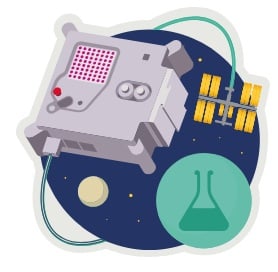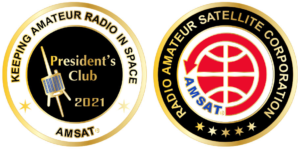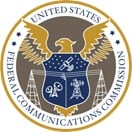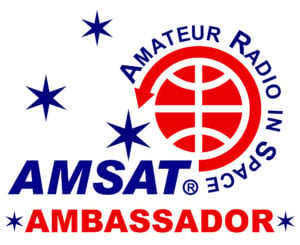- ANS-348 AMSAT News Service Bulletins
- The ARRL Solar Update
- Help Someone Get Their FIRST Ham Radio License by the End of 2025
- FCC Allocates 60-Meter World-Wide Amateur Band Approved at WRC-15; Continues Amateur Use of Four Additional 60-Meter Channels, and Updates 420 MHz Coordination Information
- ARRL to Host 2026 HamSCI Workshop at Central Connecticut State University
You are here
Amateur Radio News
ANS-348 AMSAT News Service Bulletins
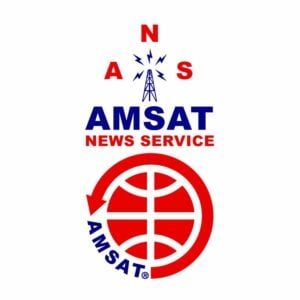
December 14, 2025
In this edition:
* Soyuz Crew Lands Ending Eight-Month Space Research Journey
* Satellites Experience “Orbital Summer” And “Orbital Winter”
* CCSDS Development Competition Open to European Hams
* VUCC Satellite Standing December 2025
* DXCC Satellite Standing for December 2025
* A Dying Satellite May Photograph Asteroid Apophis in 2029
* Changes to AMSAT-NA TLE Distribution
* Boeing’s Next Starliner Flight Will Carry Cargo Only
* ARISS News
* AMSAT Ambassador Activities
* Satellite Shorts From All Over
The AMSAT® News Service bulletins are a free, weekly news and information service of AMSAT, The Radio Amateur Satellite Corporation. ANS publishes news related to Amateur Radio in Space including reports on the activities of a worldwide group of Amateur Radio operators who share an active interest in designing, building, launching and communicating through analog and digital Amateur Radio satellites.
The news feed on https://www.amsat.org publishes news of Amateur Radio in Space as soon as our volunteers can post it.
Please send any amateur satellite news or reports to: ans-editor [at] amsat.org
You can sign up for free e-mail delivery of the AMSAT News Service Bulletins via the ANS List; to join this list see: https://mailman.amsat.org/postorius/lists/ans.amsat.org/
Soyuz Crew Lands Ending Eight-Month Space Research JourneyThe crew of Soyuz MS-27, including NASA astronaut Jonny Kim, KJ5HKP, along with Russian Cosmonauts Sergey Ryzhikov and Alexey Zubritsky, returned safely to Earth after living aboard the International Space Station (ISS) in weightlessness for 245 days. The return marked the end of ISS Expedition 73.
Lieutenant Commander (LCDR, U.S. Navy) Jonny Kim was born and raised in Los Angeles, California to Korean-American immigrants. He enlisted in the Navy as a Seaman recruit after graduating high school in 2002. After completion of Hospital Corpsman “A” school training, he reported to Basic Underwater Demolition/SEAL (BUD/S) training in Coronado, CA. After completing his training at Naval Special Warfare, Kim reported to the John F. Kennedy Special Warfare Center and School in Fort Liberty, NC for the Special Operations Combat Medic Course. He was assigned as a Special Warfare Operator to SEAL Team THREE in San Diego, CA and obtained various qualifications including Military Freefall Parachutist, Advanced SCUBA, Combatant Diver (closed circuit rebreather), Naval Special Warfare Special Reconnaissance Scout and Sniper, and Advanced Special Operations Techniques. As a Navy SEAL he completed more than 100 combat operations.
In 2012, Petty Officer First Class Kim was commissioned as a naval officer through the Navy’s enlisted-to-officer commissioning program, Seaman to Admiral-21, following graduation from the University of San Diego. Kim obtained his medical degree from Harvard Medical School and completed his internship with the Harvard Affiliated Emergency Medicine Residency at Massachusetts General Hospital and Brigham and Women’s Hospital in Boston, MA.
Kim is an Aeromedical Dual Designated (AMDD) Naval Aviator and Flight Surgeon, he completed his primary flight training at Naval Air Station (NAS) Corpus Christi, TX, helicopter advanced flight training at NAS Whiting Field in Milton, FL, and the Naval Flight Surgeon course at the Naval Aerospace Medical Institute at NAS Pensacola, FL.
Selected by NASA in 2017, Kim completed two years of training as an Astronaut Candidate. Training included technical and operational instruction in International Space Station systems, Extravehicular Activities (EVA) Operations, T-38 flight training, robotics, physiological training, expeditionary training, field geology, water and wilderness survival training, and Russian language proficiency training. In 2020, Kim began his support of International Space Station operations as a Capsule Communicator (CapCom) in Mission Control Center Houston and the Artemis program under the astronaut Exploration branch. He served as the International Space Station’s Increment Lead for Expedition 65 in 2021.
As part of his astronaut training, Kim earned his Technician Class amateur radio license in July of 2024.
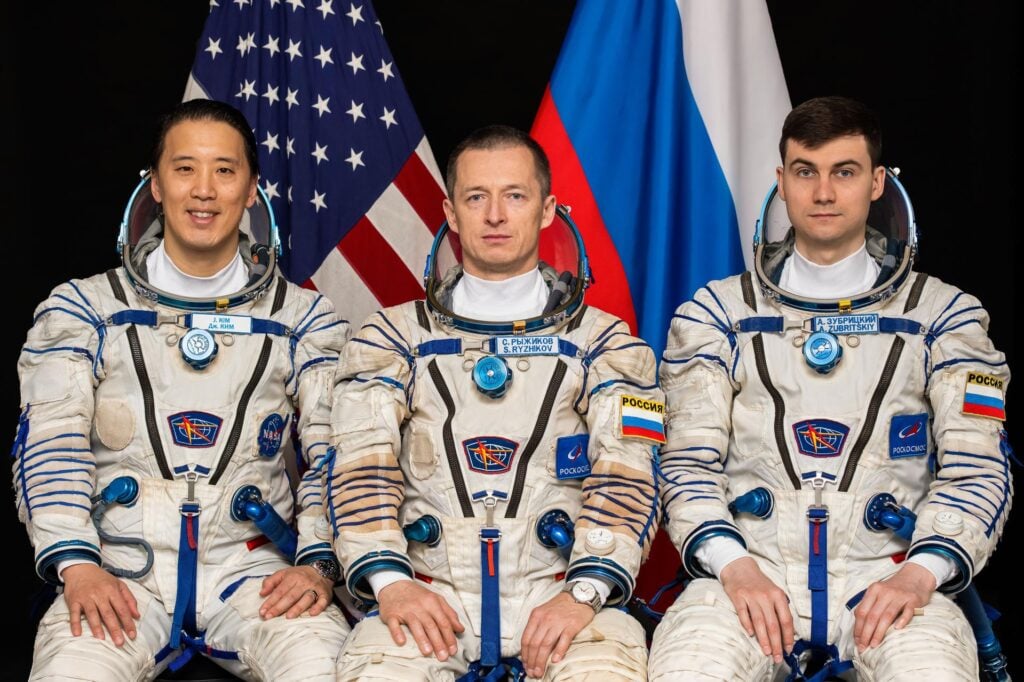
Soyuz MS-27 crew members (from left) NASA astronaut Jonny Kim and Roscosmos cosmonauts Sergey Ryzhikov and Alexey Zubritsky
pose for a pre-flight portrait at the Gagarin Cosmonaut Training Center in Russia. (Credit: GCTC)
Kim launched to the International Space Station on April 8, 2025, as a flight engineer on the Soyuz MS-27 spacecraft. He spent eight months aboard the station as an Expedition 72/73 flight engineer, conducting science experiments and maintaining the space station. During the science expedition, Kim orbited the Earth 3,920 times and traveling nearly 104 million miles. He saw the arrival of nine visiting spacecraft and the departure of six during his time in orbit.
This was Kim’s first spaceflight, where he served as flight engineer for Expedition 72 and 73. This also was Zubritsky’s first trip to the space station. Ryzhikov now has logged a total of 603 days in space during three trips to the orbital complex, ranking him 13th all time.
The three crew members were flown by helicopter to Karaganda, Kazakhstan, where recovery teams are based. After medical exams, Kim boarded a NASA aircraft and returned to Houston to spend Christmas with his wife and their three children.
Expedition 74 is now underway with veteran NASA astronaut Mike Fincke, KE5AIT, as commander leading six flight engineers including NASA astronauts Zena Cardman, KJ5CMN, and Chris Williams, KJ5GEW, JAXA (Japan Aerospace Exploration Agency) astronaut Kimiya Yui, KG5BPH, and Roscosmos cosmonauts Oleg Platonov, Sergey Kud-Sverchkov and Sergei Mikaev.
[ANS thanks NASA for the above information.]
AMSAT Remove Before Flight Key Tags Now Available
Yes, These are the Real Thing!
Your $20 Donation Goes to Help Fly a Fox-Plus Satellite
Includes First Class Postage (Sorry – U.S. Addresses Only)
Order Today at https://www.amsat.org/product/amsat-remove-before-flight-keychain
Think satellites are immune to seasons? Think again!
They experience “Orbital Summer” and “Orbital Winter” with extreme effects. Because of the position of the Earth, as well as the orbital path, satellites experience periods when they are entirely out of Earth’s shadow (“orbital summer”) and periods when they are in “eclipse” for most or all of their orbits (“orbital winter”).
What does this mean for their batteries and temperature?
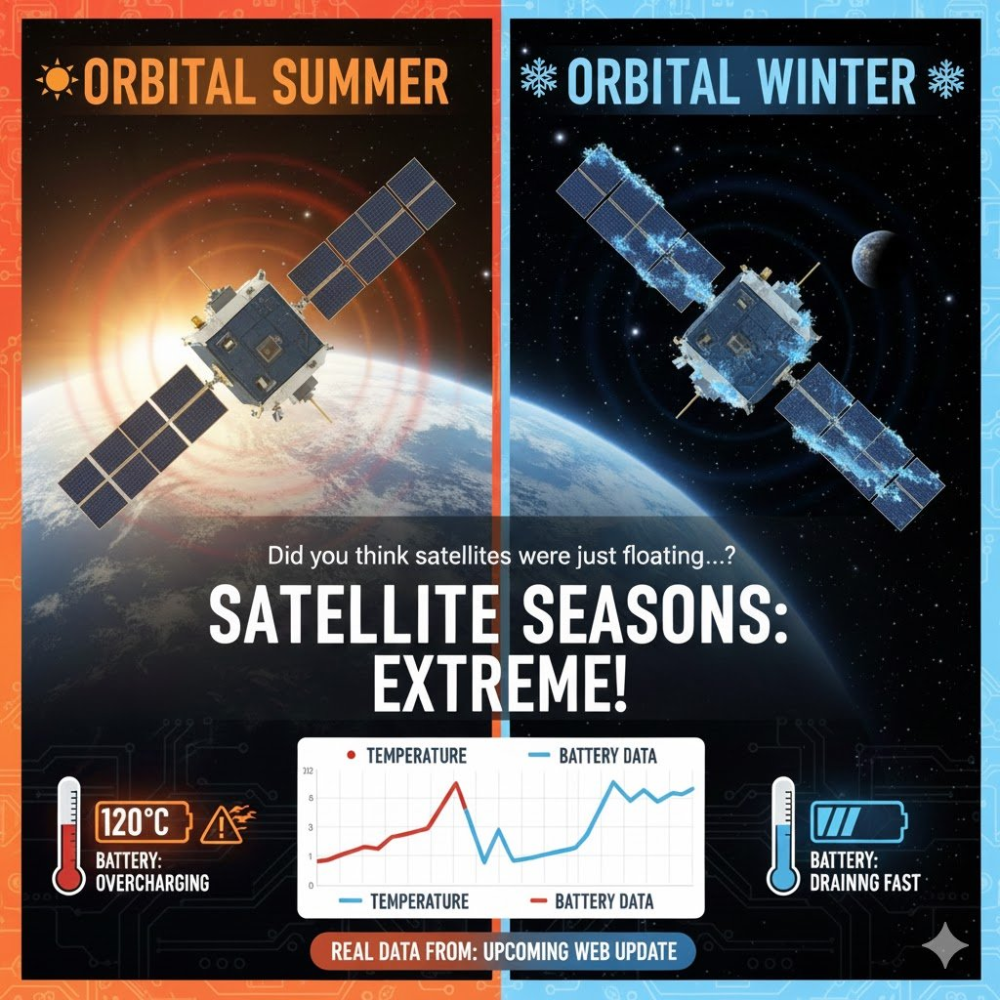
(Credit: TinyGS)
When fully illuminated, solar panels are generating non-stop power and batteries are fully charged. But “Orbital Summer” isn’t just about light; it’s about heat. Without the shadow of an eclipse to cool down, the satellite heats up, putting stress on batteries and other components.
Conversely, when “Orbital Winter” happens, a satellite will experience maximum eclipse time. When in eclipse, batteries may not charge sufficiently. Satellites must survive long periods in the dark, relying heavily on batteries and internal heaters to keep from freezing.
“Orbital Summer” And “Orbital Winter” are primary contributors to satellite failure, and a major challenge to those who build and operate satellites of all types.
[ANS thanks TinyGS for the above information.]
Only 2 Weeks Left to Get Your 2025 Coin!
Celebrate the 40th Anniversary of Amateur Radio on Human Spaceflight
Help Support GOLF and FoxPlus.
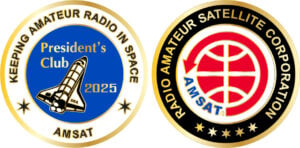
Annual memberships start at only $120
Join the AMSAT President’s Club today and help
Keep Amateur Radio in Space!
https://www.amsat.org/join-the-amsat-presidents-club/
The European Space Agency (ESA) is presenting a pilot programme on behalf of The Consultative Committee for Space Data Systems (CCSDS) and is pleased to announce a new outreach initiative aimed at strengthening engagement with the European amateur satellite and academic communities. This initiative supports the wider objective of promoting the adoption and practical application of CCSDS space communication standards.
CCSDS invites European amateur satellite operators, students, educators, and academic researchers to participate and to help advance open, interoperable space communication technologies.
ESA, in partnership with Goonhilly Earth Station, CCSDS, AMSAT-UK, and AMSAT-DL, are launching a competition to develop high-quality reference implementations of selected CCSDS protocols.
This competition is sponsored by the European Space Agency (ESA).
About the Competition
This programme invites participants to:
Develop open, standards-compliant reference implementations of CCSDS protocols
Contribute to a shared technical resource for amateur satellite operators, universities, and research groups
Gain recognition within both the CCSDS community and the broader space communications field
An in-person hackathon at Goonhilly Earth Station will be available to interested participants, providing a unique environment for collaboration, expert guidance, and accelerated development.
Goonhilly Earth Station is coordinating the competition and will not assert any ownership over Hackathon/Competition outputs.
Prize
Winners of the competition will receive an invitation to attend a CCSDS conference in the United States, where they will present their results to the international CCSDS community.
Protocols Featured in the Competition
These are the outlines of the two CCSDS protocols selected for this competition:
LunaNet Signal-In-Space Recommended Standard – Augmented Forward Signal (LSIS – AFS)
The LSIS–AFS standard defines how lunar orbiters or surface systems broadcast a unified navigation and timing signal to support future missions on and around the Moon. It provides a framework for creating an enhanced, interoperable “forward signal” that spacecraft, rovers, and astronauts can use for more accurate positioning, timing, and situational awareness.
Space Communications Session Control (CCSDS 235.1)
The CCSDS 235.1 standard defines how space missions establish, manage, and conclude communication sessions between spacecraft and ground systems. It provides a common framework that ensures reliable coordination when exchanging data, sending commands, and transitioning between communication states.
Participants may choose either to develop a functional concept or prototype that demonstrates how the LSIS–AFS signal could be designed, transmitted, interpreted, or applied to support future lunar missions, or to create a practical, interoperable reference implementation of Space Communications Session Control aligned with the CCSDS 235.1 standard.
A Long-Term Vision: Toward a Cislunar Amateur Radio Payload
CCSDS is pleased to highlight a longer-term aspiration linked to this initiative. In close cooperation with its partners—particularly ESA, which is proposing a future cislunar amateur radio payload—CCSDS intends to support the preparation of the most successful protocol implementations for potential consideration for flight.
This offers an exceptional opportunity for community-developed CCSDS-compliant software to be demonstrated in a deep-space operational environment.
This prospective mission is subject to funding and programme approval.
Contact and Expressions of Interest
For enquiries or to express interest in participating, please contact: esa-competition@amsat-uk.org
Additional details—including eligibility criteria, protocol specifications, submission requirements, evaluation processes, and timelines—will be released soon.
[ANS thanks the AMSAT-UK for the above information.]
VUCC Satellite Standing December 2025————————————————————
VUCC Satellite Award/Endorsement Change Summary for
November 01, 2025 to November 30, 2025.
————————————————————
Congratulations to the new VUCC Satellite holders.
PY2HZ
N9HF
BI1NWO
DF3VG
N0HF is first VUCC Satellite holder from EL99
PY2HZ is first VUCC Satellite holder from GG48
[ANS thanks Jon Goering, N7AZ for the above information.]
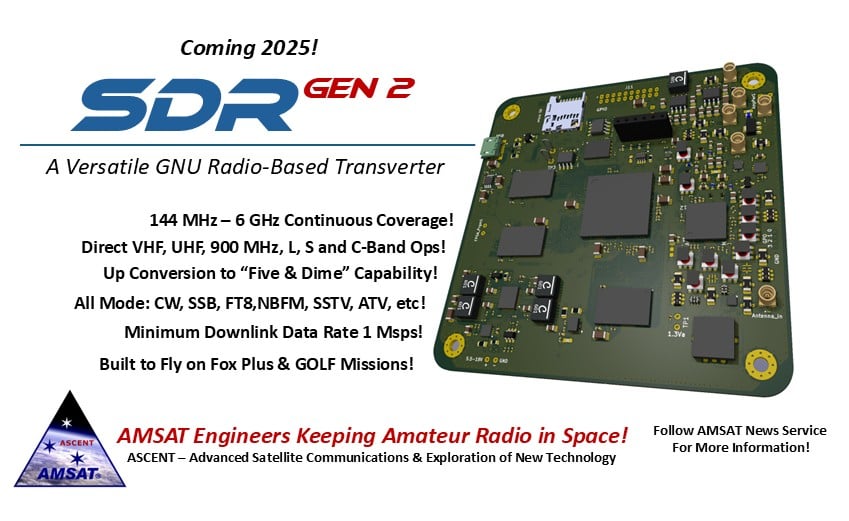 DXCC Satellite Standings for December, 2025
DXCC Satellite Standings for December, 2025
————————————————————
DXCC Satellite Award/Endorsement Change Summary for
November 01, 2025 to December 01, 2025.
————————————————————
Congratulations to the new DXCC Satellite holders.
JK2XXK
I1YDT
YB5QZ
YB5QZ is first DXCC Satellite holder from Indonesia and OJ00
[ANS thanks Jon Goering, N7AZ, for the above information.]
A Dying Satellite May Photograph Asteroid Apophis in 2029An Australian company wants to join efforts to study a rare space event, conducting its own flyby of the asteroid Apophis when it makes its close approach to Earth in 2029.
Sydney-based HEO Robotics, a provider of commercial satellite-to-satellite imagery, wants to add to the international missions already planning to get up close to the 1,115-foot-wide (340 meters) asteroid Apophis as it zooms by Earth in April 2029 by buying a satellite near the end of its life up in geostationary orbit and use its remaining fuel.
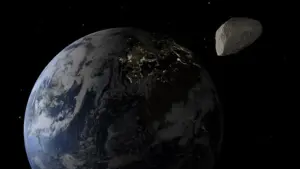
An illustration of the “God of Destruction” asteroid Apophis as it makes a close approach to Earth in April 2029
(Image credit: Jonathan Männel / with Eyes on the Solar System, NASA/JPL)
Satellites in the geostationary belt (GEO) orbit 22,236 miles (35,786 kilometers) above the equator. Spacecraft nearing the end of their lives use their remaining fuel to head into a so-called graveyard orbit above GEO to take themselves out of the way of the operational satellites. HEO aims to buy a satellite near the end of its mission lifetime and, using a little more fuel than needed for the graveyard trip, make a close approach to Apophis, which will pass within the GEO belt when it makes its close approach to Earth on Friday, April 13, 2029.
[ANS thanks Space.com for the above information. Read the full article at https://www.space.com/astronomy/asteroids/a-dying-satellite-could-use-its-final-moments-to-photograph-the-infamous-asteroid-apophis-in-2029]
Changes to AMSAT TLE Distribution for December 12, 2025Two Line Elements or TLEs, often referred to as Keplerian elements or keps in the amateur community, are the inputs to the SGP4 standard mathematical model of spacecraft orbits used by most amateur tracking programs. Weekly updates are completely adequate for most amateur satellites. TLE bulletin files are updated daily in the first hour of the UTC day. New bulletin files will be posted immediately after reliable elements become available for new amateur satellites. More information may be found at https://www.amsat.org/keplerian-elements-resources/.
The following satellite has been removed from this week’s AMSAT TLE Distribution:
Duchifat 3 NORAD Cat ID 44854 Decayed from orbit on or about 08 Dec 2025
The following satellites have been added to this week’s AMSAT TLE Distribution:
SilverSat NORAD Cat ID 66909 Downlink frequency: 437.175 MHz
BEE-1000 NORAD Cat ID 66650 Downlink frequency: 436.5 MHz
SNUGLITE_III DURI NORAD Cat ID 66661 Downlink frequency 436.789 MHz
[ANS thanks Joe Fitzgerald, KM1P, AMSAT Orbital Elements Manager, for the above information.]
Boeing’s Next Starliner Flight Will Carry Cargo OnlyNASA ended months of speculation about the next flight of Boeing’s Starliner spacecraft, confirming that the vehicle will carry only cargo to the International Space Station.
NASA and Boeing are now targeting no earlier than April 2026 to fly the uncrewed Starliner-1 mission, the space agency said. Launching by next April will require completion of rigorous test, certification, and mission readiness activities, NASA added in a statement.
Starliner’s first flight in December 2019, without crew, had to be truncated after software problems plagued the vehicle. It was nearly lost shortly after launch as well as before atmospheric reentry. It did not make a planned rendezvous with the space station.
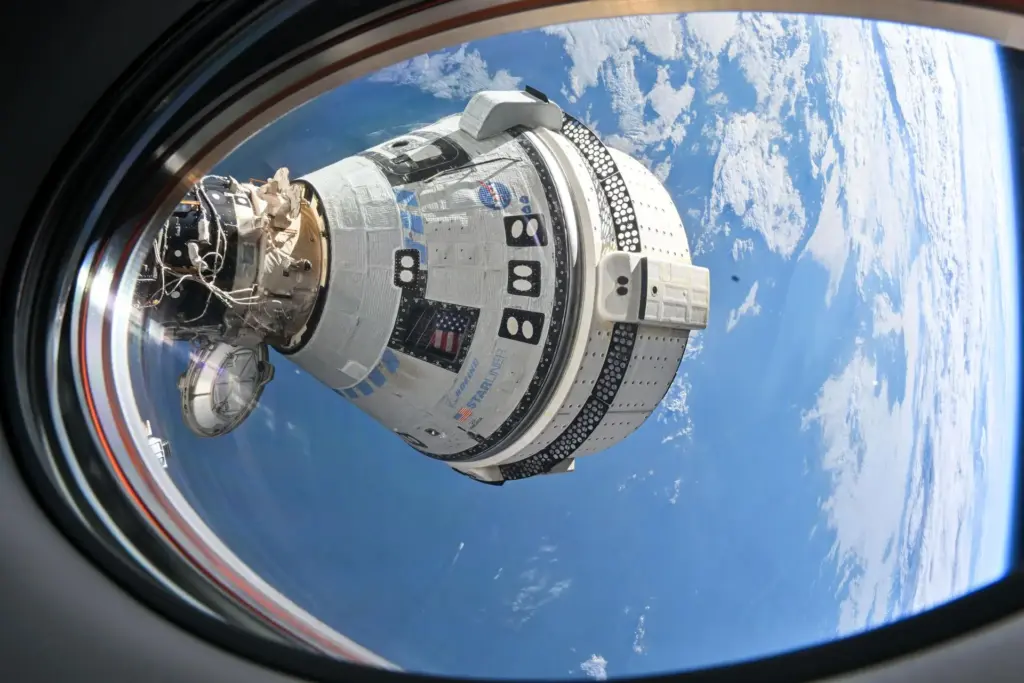
Boeing’s Starliner spacecraft is pictured docked to the Harmony module’s forward port at the International Space Station. Photo credit: NASA
The second mission, Orbital Flight Test 2, took place in May 2022. Because of problems on the previous mission, this spacecraft also flew uncrewed. This flight was more successful, reaching the space station despite some thruster issues.
NASA then spent more than two years testing Starliner on the ground before its first crewed flight in 2024, carrying NASA astronauts Butch Wilmore and Suni Williams, KD5PLB. During its approach to the space station, the Starliner spacecraft once again experienced serious thruster issues. (However, the life-and-death nature of this flight was not revealed until nearly a year later.) Starliner ultimately docked with the station, but after heated deliberations, NASA informed Boeing that the vehicle would return to Earth uncrewed.
As a result, a Dragon mission was launched later in 2024 carrying just two astronauts instead of a full complement of four. This allowed for the safe return of Wilmore and Williams in March 2025.
[ANS thanks Wired for the above information. Read the full article at https://www.wired.com/story/boeings-next-starliner-flight-will-only-be-allowed-to-carry-cargo/.]
ARISS NewsAmateurs and others around the world may listen in on contacts between amateurs operating in schools and allowing students to interact with astronauts and cosmonauts aboard the International Space Station. The downlink frequency on which to listen is 145.800 MHz worldwide.
Scheduled ContactsDue to the holidays, no contacts are scheduled until after the first of the year.
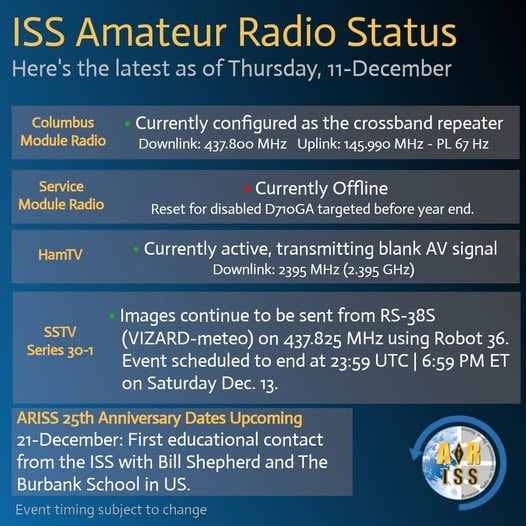
Note, all times are approximate. It is recommended that you do your own orbital prediction or start listening about 10 minutes before the listed time.
The latest information on the operation mode can be found at https://www.ariss.org/current-status-of-iss-stations.html
The latest list of frequencies in use can be found at https://www.ariss.org/contact-the-iss.html
[ANS thanks Charlie Sufana, AJ9N, one of the ARISS operation team mentors for the above information.]
Want to fly the colors on your own grid expedition?Get an AMSAT car flag and other neat stuff from our Zazzle store!
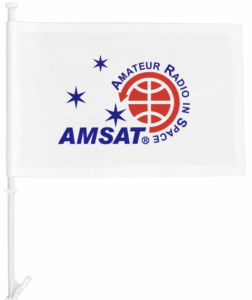
AMSAT Ambassadors provide presentations, demonstrate communicating through amateur satellites, and host information tables at club meetings, hamfests, conventions, maker faires, and other events.
None currently scheduled.
Interested in becoming an AMSAT Ambassador? AMSAT Ambassadors provide presentations, demonstrate communicating through amateur satellites, and host information tables at club meetings, hamfests, conventions, maker faires, and other events.
For more information go to: https://www.amsat.org/ambassador/
[ANS thanks Bo Lowrey, W4FCL, Director – AMSAT Ambassador Program, for the above information.]
Satellite Shorts from All Over+ Earth observation satellite TUBIN of Technical University Berlin, Germany is about to re-enter Earth’s atmosphere in the upcoming days; 16th December +/-1 day. During the orbit decay it is transmitting a telemetry beacon every 10 seconds, including position, attitude, temperatures, etc. via amateur radio UHF band at 435.950 MHz. Researchers would appreciate support of additional radio amateurs listening in and forward the received telemetry data. Further information can be found at https://community.libre.space/t/tubin-tubsat-27-re-entry/13998. As the orbit is decaying quite fast, most recent TLE’s shall be used, which are frequently updated at https://db.satnogs.org/api/tle/?format=3le&norad_cat_id=48900. Any decoded frames, audio recordings or reception reports are very welcome and can be submitted following the instructions in https://community.libre.space/t/tubin-tubsat-27-re-entry/13998. The team at TU Berlin will collect all contributions and can provide specialized TUBIN re-entry QSL cards. Full project overview at https://www.tu.berlin/en/raumfahrttechnik/research/current-projects/tubin. (ANS thanks Steffen Reinert of Technische Universität Berlin for the above information.)
+ SkyRoof, a Windows application for Hams and satellite enthusiasts by Alex Shovkoplyas, VE3NEA, was recently featured on the website of AMSAT-SM, the Swedish amateur radio satellite organization. The article by Lars Thunberg, SMØTGU, may be found at https://www.amsat.se/2025/11/22/skyroof-sdr-satellite-software/. Lars also has an interesting article on setting up a LORA telemetry groundstation at https://www.amsat.se/category/operations/. (ANS thanks AMSAT-SM for the above information.)
+ Similarly, Peter Goodhall, MM9SQL, has developed Zenith, a web-based tracking application. Information at https://zenithtracker.org/. (ANS thanks Peter Goodhall, MM9SQL, for the above information.)
+ AMSAT’s CubeSat Simulator gets excellent reviews, but a budget version is available from the Ukraine for those with access to 3-D printing and a willingness to overcome some bugs and limitations. A YouTube video reviews the project at https://www.youtube.com/watch?v=pvtHcwemfco (ANS thanks @saveitforparts for the above information.)
+ At next year’s World Radiocommunications Conference (WRC-25), governments will face a choice that goes to the heart of how we monitor our warming planet. Some regulators are wondering whether to open part of the X-band — the 8.025–8.4 GHz range used by Earth observation satellites — to 5G and 6G mobile networks. Several major telecom operators have been pushing for this move, arguing that they could use this spectrum more efficiently and pay countries handsomely for the right to do so. Eleven satellite-focused companies have formed the Remote Sensing Collective to resist the change. They’ve done this because the satellites we depend on to understand the environment depend in turn on the X-band. (ANS thanks SpaceNews for the above information. Read the full article at http://bit.ly/44pC8wX.)
+ Last month, Chinese astronauts on board the country’s Tiangong space station discovered cracks in the window of their return vehicle, the Shenzhou-20, which officials suspected were the result of a space debris strike. The spacecraft was deemed not safe enough to return its crew, prompting an orbital game of musical chairs as the China Manned Space Agency (CMSA) launched an emergency uncrewed replacement spacecraft, Shenzhou-22, to the station. Two Shenzhou-21 astronauts embarked on the mission’s first spacewalk on December 9, inspecting and photographing a damaged spacecraft window which triggered an earlier emergency launch. CMSA did not publicize results. (ANS thanks Futurism.com for the above information. Read the full article at https://futurism.com/space/chinese-astronauts-spacewalk-station-damaged-spacecraft.)
+ NASA has lost contact with the Mars Atmosphere and Volatile Evolution, or MAVEN, a spacecraft that has circled the planet for more than a decade, collecting science data and serving as a key communications relay. (ANS thanks SpaceNews for the above information.)
Join AMSAT today at https://launch.amsat.org/In addition to regular membership, AMSAT offers membership to:
- Societies (a recognized group, clubs or organization).
- Students are eligible for FREE membership up to age 25.
- Memberships are available for annual and lifetime terms.
Contact info [at] amsat.org for additional membership information.
73 and remember to help Keep Amateur Radio in Space!
This week’s ANS Editor,
Mark Johns, KØJM
mjohns [at] amsat.org
ANS is a service of AMSAT, the Radio Amateur Satellite Corporation, 712 H Street NE, Suite 1653, Washington, DC 20002
AMSAT is a registered trademark of the Radio Amateur Satellite Corporation.
The ARRL Solar Update
Solar activity reached high levels this past week when Region 4299
produced an M1.1 (R1/Minor) flare on December 6. Shortly after, the
region produced an M8.1/2b (R3/Strong) flare, also on December 6.
Associated with the M8.1 flare was a 1,100 SFU Tenflare, a 1,143
km/s Type II sweep and a Type IV sweep. (A "sweep" is a solar radio
burst that sweeps through the RF spectrum as the energy moves
outward...
FCC Allocates 60-Meter World-Wide Amateur Band Approved at WRC-15; Continues Amateur Use of Four Additional 60-Meter Channels, and Updates 420 MHz Coordination Information
The Federal Communications Commission (FCC) on December 9, 2025, released a long-awaited Report and Order adopting a new amateur radio spectrum allocation in the 60-meter band that was approved for world-wide use on a secondary basis in the WRC-15 (World Radiocommunication Conference 2015) Final Acts. The Commission also agreed with a petition from ARRL The National Association for Amateur Radi...
ARRL to Host 2026 HamSCI Workshop at Central Connecticut State University
ANS-341 AMSAT News Service Weekly Bulletins

December 7, 2025
In this edition:
* KSLV-II Mission Deploys 13 Satellites, Including New Amateur Radio Payloads
* ISS Deployment Added Five New Education-Focused Amateur Radio Missions
* ARISS Moves Series 30 SSTV Transmissions to RS-38S After Equipment Issue
* GridMasterMap Satellite Top 100 Rovers December 2025 Rankings
* Changes to AMSAT-NA TLE Distribution for December 5, 2025
* ARISS News
* AMSAT Ambassador Activities
* Satellite Shorts From All Over
The AMSAT® News Service bulletins are a free, weekly news and information service of AMSAT, The Radio Amateur Satellite Corporation. ANS publishes news related to Amateur Radio in Space including reports on the activities of a worldwide group of Amateur Radio operators who share an active interest in designing, building, launching and communicating through analog and digital Amateur Radio satellites.
The news feed on https://www.amsat.org publishes news of Amateur Radio in Space as soon as our volunteers can post it.
Please send any amateur satellite news or reports to: ans-editor [at] amsat.org
You can sign up for free e-mail delivery of the AMSAT News Service Bulletins via the ANS List; to join this list see: https://mailman.amsat.org/postorius/lists/ans.amsat.org/
KSLV-II Mission Deploys 13 Satellites, Including New Amateur Radio PayloadsSouth Korea recorded another significant achievement in its growing domestic space program with the successful nighttime launch of the Korea Space Launch Vehicle-II (KSLV-II), also known as Nuri, from the Naro Space Center in Goheung, South Korea. Liftoff occurred at 16:13 UTC on 26 November 2025 after a brief delay caused by an abnormal pressure-sensor signal in the rocket’s umbilical system. After the anomaly was resolved, Nuri ascended smoothly and became South Korea’s first orbital launch conducted during nighttime operations.
The vehicle performed nominally throughout ascent, completing stage separations on schedule and surpassing the 500 km mark roughly seven minutes after liftoff. Orbit insertion occurred approximately twelve minutes into the flight, followed one minute later by the deployment of CAS500-3, a 500-kilogram scientific satellite designed for highly light-sensitive Earth-observation missions. Korea Aerospace Administration (KASA) officials confirmed multiple ground-station contacts with CAS500-3 during its first day on orbit, including passes over the King Sejong Station in Antarctica.
Following the primary payload, Nuri deployed twelve CubeSats, nine of which operate in the amateur UHF bands. Of these, three satellites were fully IARU-coordinated. The twin SNUGLITE-III CubeSats—HANA (436.460 MHz) and DURI (436.788 MHz)—developed by Seoul National University, each carry a 9600-bps GMSK AX.25 digipeater, UHF beacons, and an S-band imaging payload at 2405.000 MHz. These spacecraft support amateur-radio training, GPS-RO technology demonstrations, and formation-flying experiments. The third coordinated payload, SPIRONE (436.650 MHz / 2425.100 MHz) from Sejong University, combines an environmental mission to detect marine plastic with a GMSK beacon and an S-band transponder intended for amateur-radio experimentation.
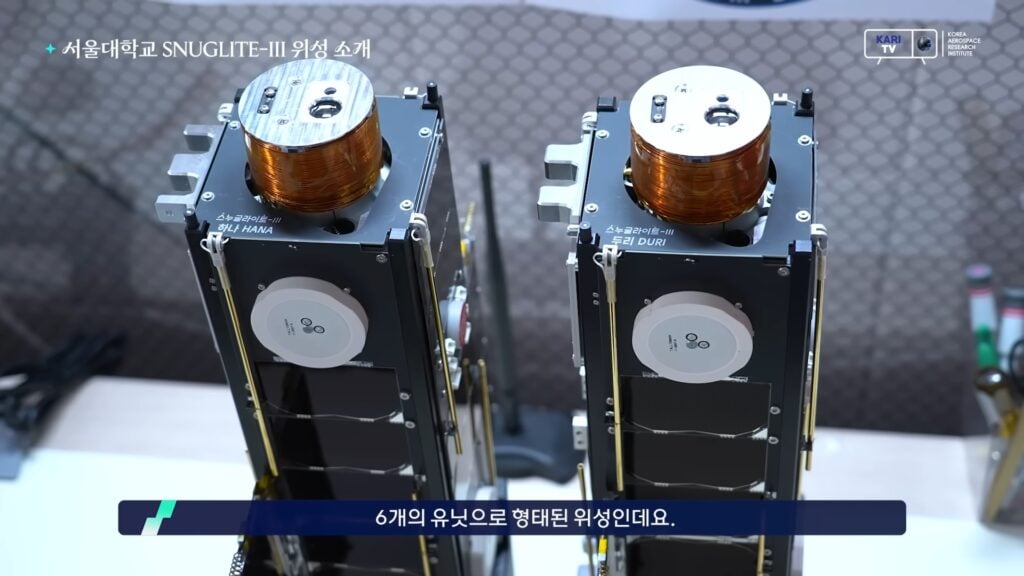 Student-built SNUGLITE-III HANA and DURI CubeSats are shown before their November 2025 launch. [Credit: Seoul National University]Six additional CubeSats on the mission also used amateur-band downlinks but were not coordinated through the IARU. These include JACK-003, JACK-004 (both 436.300 MHz), BEE-1000 (436.500 MHz), PERSAT01 (437.125 MHz), K-HERO (437.165 MHz), and INHA-RoSAT (437.665 MHz). While uncoordinated, they remain of interest to amateur-radio satellite observers, particularly during early beacon activity and commissioning efforts as teams work to establish first contact.
Student-built SNUGLITE-III HANA and DURI CubeSats are shown before their November 2025 launch. [Credit: Seoul National University]Six additional CubeSats on the mission also used amateur-band downlinks but were not coordinated through the IARU. These include JACK-003, JACK-004 (both 436.300 MHz), BEE-1000 (436.500 MHz), PERSAT01 (437.125 MHz), K-HERO (437.165 MHz), and INHA-RoSAT (437.665 MHz). While uncoordinated, they remain of interest to amateur-radio satellite observers, particularly during early beacon activity and commissioning efforts as teams work to establish first contact.
This launch also reflects South Korea’s broader strategy of strengthening its commercial aerospace ecosystem. For the first time, primary launch-operation responsibility was handled by Hanwha Aerospace, marking a transition toward greater private-sector involvement in national space access. Despite a two-and-a-half-year gap since the previous Nuri flight, Hanwha and its partners maintained launch readiness and executed the mission successfully—an encouraging sign for Korea’s long-term space-industry development.
KASA plans at least two additional Nuri launches through 2027, with the goal of supporting annual flights thereafter and ultimately developing a next-generation booster capable of heavier payloads and deep-space missions. For the amateur-satellite community worldwide, the KSLV-II program’s demonstrated ability to deploy large numbers of small spacecraft—including coordinated amateur payloads—is a promising development, expanding future rideshare opportunities and adding new signals to monitor across UHF and S-band.
Read the full article at: https://www.koreaherald.com/article/10624440 and Libre Space discussion at: https://community.libre.space/t/kslv-2-cas500-3-mission-2025-11-26-16-13-utc/14043
[ANS thanks Kan Hyeong-woo, The Korea Herald, and the Libre Space community, for the above information]
ISS Deployment Added Five New Education-Focused Amateur Radio MissionsSeven satellites were deployed from the International Space Station on December 2, 2025, with release times spanning 08:10 UTC to 09:50 UTC in three batches using the Voyager Space NanoRacks CubeSat Deployer (NRCSD) system. Five of the deployed spacecraft—SilverSat, RHOK-SAT, Content-Cube, EagleSat-2, and Foras Promineo—operate on amateur radio frequencies and represent a broad collection of university, student-led, and educational missions. SatNOGS stations scheduled more than 700 observations during the first 24 hours as the satellites drifted away from the ISS to form their initial orbits, requiring careful Doppler evaluation and coordinated tracking during the early identification phase.
The first release at 08:10 UTC deployed the 6U DUPLEX satellite, which does not carry an amateur-radio payload. A second deployment window at 08:20 UTC released four 1U spacecraft: SilverSat, RHOK-SAT, Content-Cube, and CU-Alpha. Of these, CU-Alpha operates outside the amateur bands using LoRa at 915 MHz. The final release at 09:50 UTC deployed the two 3U amateur missions, EagleSat-2 and Foras Promineo, completing the NRCSD-29 sequence.
SilverSat, a 1U open-source CubeSat designed to inspire student interest in space science and engineering, was the first amateur satellite from NRCSD-29 to be positively heard on orbit. The spacecraft automatically relays images and telemetry to its ground network, which posts them to social-media platforms whenever a pass is received. European stations reported early carrier traces shortly after deployment, and the first confirmed CW beacon—sent at 16 WPM under the callsign “WP2XGW”—was received at approximately 14:46 UTC. SilverSat uses a UHF turnstile antenna oriented perpendicular to its magnetically stabilized axis, producing LHCP reception for most northern observers.
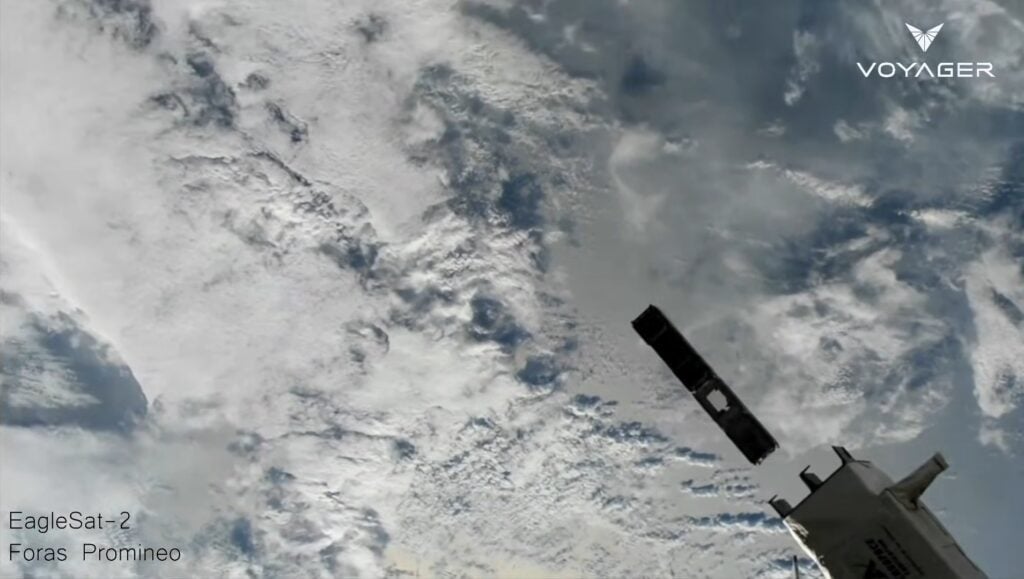 EagleSat-2, a 3U satellite, was successfully deployed early Tuesday morning from the NRCSD-29 system. [Credit: Voyager Space]
EagleSat-2, a 3U satellite, was successfully deployed early Tuesday morning from the NRCSD-29 system. [Credit: Voyager Space]
The 08:20 UTC deployment batch also included RHOK-SAT, Content-Cube, and a 1U CubeSat from Cornell University carrying a brief-duration light-sail experiment designed by students at the Space Systems Design Studio. The sail will be released during a later activation sequence following the CubeSat’s deployment and carries several ChipSat flight computers intended to transmit LoRa telemetry in the 70 cm amateur band during a short operational period. Because the timing of the sail’s release depends on mission conditions, additional details about the project and its ChipSat technology are available at alphacubesat.cornell.edu. Telemetry downlinks for this group include 435.425 MHz for RHOK-SAT (9600 FSK), 437.020 MHz for Content-Cube (9600 GMSK), and 437.400 MHz for the ChipSats, which may remain active only for hours to a few days before re-entry.
The two 3U satellites, EagleSat-2 and Foras Promineo, completed the deployments at 09:50 UTC. EagleSat-2, developed by undergraduate students at Embry-Riddle Aeronautical University, carries two scientific experiments: the Cosmic Ray Payload, designed to track high-energy particle interactions across three observation phases, and the Memory Degradation Experiment, which compares radiation-induced error rates in several CMOS memory technologies. EagleSat-2 transmits on 437.165 MHz using 19k2 2-GFSK. Foras Promineo supports a public-outreach mission based on an interactive robotic-arm game that operates autonomously or under real-time command during ground passes, transmitting LoRa telemetry on 437.400 MHz.
As of the first day of operations, SatNOGS contributors reported active tracking of all five amateur satellites using preliminary TLEs derived from ISS deployment vectors. With the objects initially clustered closely together, early identification required coordinated Doppler measurements and community-supported observation campaigns. As tracking continues to refine and the satellites separate further, operators can expect more reliable beacon reception and additional opportunities for amateur participation as the missions begin their operational phases.
Read the NRCSD29 ISS Satellites Deployment Libre Space discussion at: https://community.libre.space/t/nrcsd29-iss-satellites-deployment-2025-12-02-08-28-utc/14045
[ANS thanks AMSAT-Francophone and the Libre Space community for the above information]
Only 3 Weeks Left to Get Your Coin!Celebrate the 40th Anniversary of Amateur Radio on Human Spaceflight
Help Support GOLF and FoxPlus. Annual memberships start at only $120
Join the AMSAT President’s Club today and help
Keep Amateur Radio in Space!
https://www.amsat.org/join-the-amsat-presidents-club/ ARISS Moves Series 30 SSTV Transmissions to RS-38S After Equipment Issue
Amateur Radio on the International Space Station (ARISS) has released final scheduling details for the Series 30 Slow-Scan Television retransmission event, which will take place using the RS-38S satellite rather than the ISS. Transmissions are scheduled to begin on 5 December at 00:01 UTC (4 December at 7:01 PM ET) and continue through 13 December at 23:59 UTC. The images will be broadcast from RS-38S, also known as VIZARD-meteo and listed under NORAD 57189, on a downlink of 437.825 MHz with normal Doppler adjustments. Each image will be sent in Robot 36 mode for approximately 36 seconds, followed by a silence period of two to three minutes. Operators may upload their received images to the ARISS SSTV gallery to obtain a new Series 30-1 certificate tailored for the RS-38S event. The satellite can be monitored on amsat.org/status under its VIZARD-meteo entry, and pass-prediction tools are available at amsat.org/pass-prediction for those planning reception attempts.
The RS-38S retransmission provides amateurs an opportunity to receive all 12 Series 30 images after the ISS-based event in November was interrupted by a hardware issue. ARISS announced on 29 November that the RS-38S spacecraft would transmit the same Series 30 imagery during the period of 5–13 December, offering a complete replacement opportunity. This announcement was well received by participants who were unable to capture images during the short ISS transmission window on 12 November. As with previous SSTV events, stations may submit their best frames to the ARISS gallery and request corresponding certificates. The retransmission preserves the commemorative nature of Series 30 while operating entirely independent of ISS hardware. ARISS encourages operators worldwide to monitor its official channels for updates throughout the event period.
The satellite-based activity follows a series of technical difficulties that prevented completion of the original Series 30 event aboard the International Space Station. The ISS transmissions began on 12 November with approximately two hours of successful downlink activity, during which several stations worldwide decoded and uploaded clean images. Soon afterward, SSTV activity on 145.800 MHz FM abruptly stopped, prompting ARISS to acknowledge the outage and begin checking the system status with operations teams on the ground. Crew schedules and limited immediate access to the Service Module hardware initially slowed the troubleshooting process. Operators monitored the downlink throughout the day, but no additional frames were received. ARISS provided real-time updates confirming the outage and advising listeners that further checks were underway.
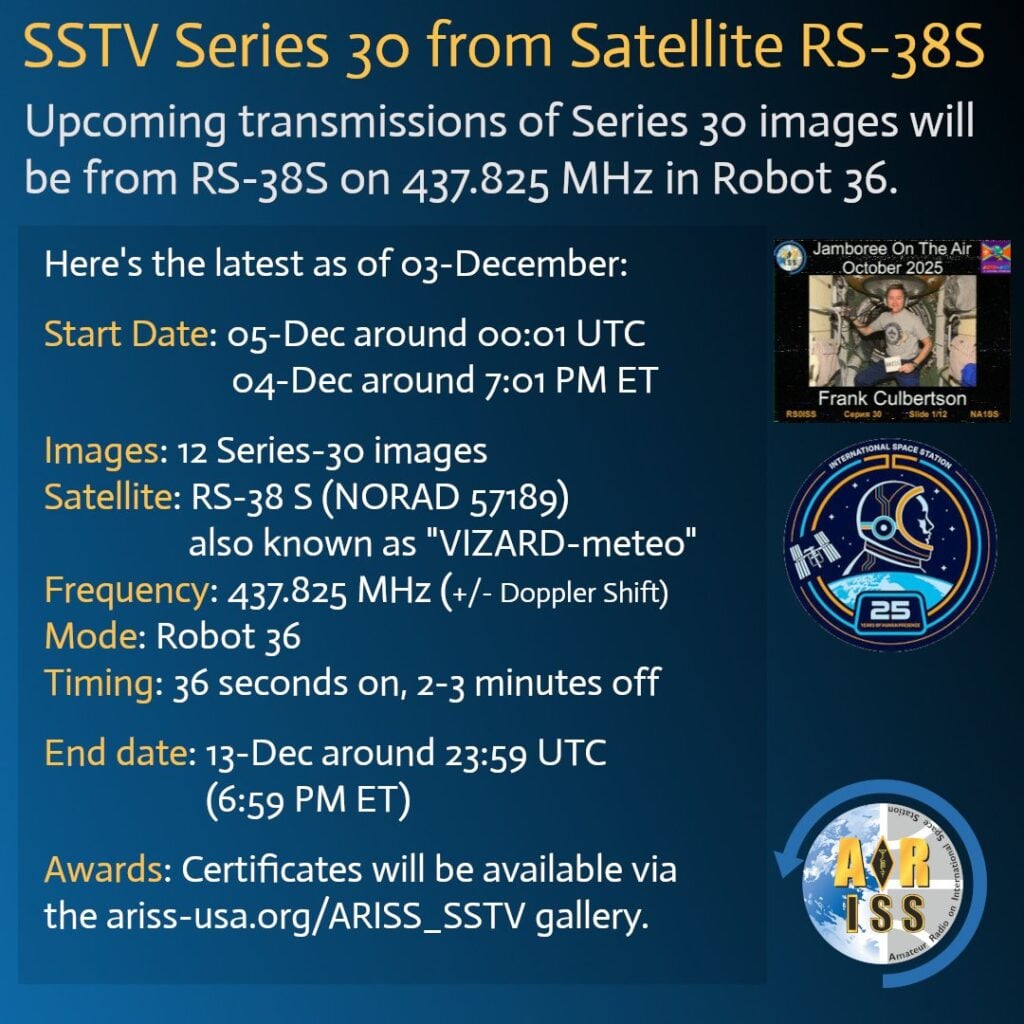 SSTV Series 30 images will be transmitted from the RS-38S satellite beginning December 5 throughout the event. [Credit: ARISS]
SSTV Series 30 images will be transmitted from the RS-38S satellite beginning December 5 throughout the event. [Credit: ARISS]
By 15 November, ARISS reported that the SSTV system had remained offline since the initial interruption and that ongoing solar activity added complexity to assessments of the Service Module equipment. U.S. teams awaited additional information, and only the early decodes from the opening hours of the event appeared in the official SSTV gallery. ARISS thanked operators for their continued patience and reminded them that certificates would still be issued for the initial images. Amateur radio stations worldwide continued to submit signal reports and monitor each ISS pass in hopes of renewed activity. Despite broad interest, no additional transmissions were detected. ARISS stated it would continue providing updates as new information became available.
On 16 November, after three days of analysis, ARISS confirmed that the ISS-based Series 30 event could not continue. The Kenwood D710GA transceiver in the Zvezda Service Module, which supports SSTV operations, appeared to have failed and was taken offline for further review. ARISS reported that the radio functioned normally for approximately two hours before the issue occurred, ending downlink activity for the remainder of the planned 12–20 November window. Operators who received images early in the event were encouraged to upload their frames before the submission deadline to qualify for Series 30 certificates. ARISS emphasized that those certificates would still be honored despite the shortened schedule. No additional transmissions were expected until testing of the affected hardware could be completed.
A follow-on update on 21 November clarified the status of the Service Module radio system. ARISS reported that the faulty Kenwood D710GA had been replaced with the onboard spare Kenwood D710E, which is now supporting scheduled Russian school contacts and required backup communications. Additional in-orbit testing of the original D710GA is planned to determine the cause of the failure and evaluate when APRS or SSTV capabilities might be restored. ARISS also confirmed that the Columbus module radio systems, including the cross-band FM repeater and HamTV equipment, continue to operate normally. Restoration of SSTV service from the ISS will depend on the results of continued hardware assessments. Until those evaluations are complete, ISS-based SSTV remains offline, and the RS-38S retransmission provides the primary means for operators to receive the full Series 30 imagery.
[ANS thanks Amateur Radio on the International Space Station (ARISS) for the above information]
GridMasterMap Satellite Top 100 Rovers December 2025 RankingsThe December 2025 rankings for the Top 100 Rovers (Mixed LEO/MEO/GEO) in satellite operations, as determined by @GridMasterMap on Twitter, has been released. The ranking is determined by the number of grids and DXCC entities activated, taking into account only those grids where a minimum number of QSOs logged on the gridmaster.fr website have been validated by a third party. Grid numbers do not directly reflect the exact number of activations. Satellite operators are encouraged to upload their LoTW satellite contacts to https://gridmaster.fr in order to provide more accurate data.
Updated: 2025-12-02
1 ND9M 26 KX9X 51 KE0PBR 76 SP5XSD 2 NJ7H 27 KG5CCI 52 WD5GRW 77 DL4EA 3 UT1FG 28 DJ8MS 53 XE3DX 78 N6UTC 4 JA9KRO 29 N5BO 54 W7WGC 79 N4UFO 5 N5UC 30 ON4AUC 55 LU4JVE 80 VE7PTN 6 F5VMJ 31 K8BL 56 JK2XXK 81 PT2AP 7 DL6AP 32 KE4AL 57 PR8KW 82 VE1VOX 8 WI7P 33 KB5FHK 58 EB1AO 83 AA8CH 9 K5ZM 34 AC0RA 59 XE1ET 84 KB2YSI 10 DP0POL 35 PA3GAN 60 EA4NF 85 KI7UXT 11 OE3SEU 36 KI0KB 61 N6DNM 86 AF5CC 12 WY7AA 37 F4BKV 62 W8LR 87 KJ7NDY 13 N6UA 38 KI7UNJ 63 W1AW 88 BI1MHK 14 HA3FOK 39 VA3VGR 64 KI7QEK 89 PT9BM 15 LU5ILA 40 JO2ASQ 65 SM3NRY 90 FG8OJ 16 W5PFG 41 VE3HLS 66 KE9AJ 91 YU0W 17 AK8CW 42 BG7QIW 67 F4DXV 92 BG5CZD 18 N9IP 43 HJ5LVR 68 VE1CWJ 93 PU4CEB 19 AD0DX 44 LA9XGA 69 AA5PK 94 W8MTB 20 AD0HJ 45 VK5DG 70 AD7DB 95 N4DCW 21 DL2GRC 46 N7AGF 71 KM4LAO 96 WA9JBQ 22 N4AKV 47 K7TAB 72 M1DDD 97 BA8AFK 23 ND0C 48 DF2ET 73 HB9GWJ 98 VE3GOP 24 WD9EWK 49 JL3RNZ 74 VA7LM 99 JM1CAX 25 BA1PK 50 KE0WPA 75 N8RO 100 PS8BR[ANS thanks @GridMasterMap for the above information]
AMSAT Remove Before Flight Key Tags Now AvailableYes, These are the Real Thing!
 Your $20 Donation Goes to Help Fly a Fox-Plus Satellite
Your $20 Donation Goes to Help Fly a Fox-Plus SatelliteIncludes First Class Postage (Sorry – U.S. Addresses Only)
Order Today at https://www.amsat.org/product/amsat-remove-before-flight-keychain Changes to AMSAT TLE Distribution for December 5, 2025
Two Line Elements or TLEs, often referred to as Keplerian elements or keps in the amateur community, are the inputs to the SGP4 standard mathematical model of spacecraft orbits used by most amateur tracking programs. Weekly updates are completely adequate for most amateur satellites. TLE bulletin files are updated daily in the first hour of the UTC day. New bulletin files will be posted immediately after reliable elements become available for new amateur satellites. More information may be found at https://www.amsat.org/keplerian-elements-resources/.
The following satellites have been added to this week’s AMSAT TLE Bulletin:
SPIRONE NORAD Cat ID 66657
K-HERO NORAD Cat ID 66660
[ANS thanks Joe Fitzgerald, KM1P, AMSAT Orbital Elements Manager, for the above information.]
ARISS NewsAmateurs and others around the world may listen in on contacts between amateurs operating in schools and allowing students to interact with astronauts and cosmonauts aboard the International Space Station. The downlink frequency on which to listen is 145.800 MHz worldwide.
Scheduled Contacts+ Recently Completed
Istituto Di Istruzione Superiore “Il Tagliamento” Di Spilimbergo / Istituto Comprensivo “G. Mazzini”, Spilimbergo, Italy, telebridge via IK1SLD
The ISS callsign was OR4ISS
The scheduled crewmember was Zena Cardman KJ5CMN
The ARISS mentors were IZ2GOJ and IKØWGF
Contact was successful: Fri 2025-11-28 11:40:17 UTC
Congratulations to the Istituto Di Istruzione Superiore “Il Tagliamento” Di Spilimbergo (Pn) and Istituto Comprensivo “G. Mazzini” students, Zena, mentors IZ2GOJ and IKØWGF, and telebridge via IK1SLD!
Watch the Livestream at https://www.ariotti.com/ and https://www.youtube.com/live/MgG7kcYvxWM
Russian State Agrarian University – Moscow Agricultural Academy named after K.A. Timiryazev, Moscow, Russia, direct via TBD
The ISS callsign was RSØISS
The scheduled crewmember was Sergey Kud-Sverchkov
The ARISS mentor was RV3DR
Contact was successful: Fri 2025-12-05 11:00 UTC
Congratulations to the students of the Russian State Agrarian University – Moscow Agricultural Academy, Sergey Kud-Sverchkov, and mentor RV3DR on a successful contact!
Lincoln Magnet School, Springfield, Illinois, direct via K9OK
The ISS callsign was NA1SS
The scheduled crewmember was Jonathan (Jonny) Kim KJ5HKP
The ARISS mentor was AJ9N
Contact was successful: Fri 2025-12-05 15:29:41 UTC
Congratulations to the students of Lincoln Magnet School, Jonathan (Jonny) Kim KJ5HKP, and mentor AJ9N on a successful contact!
+ Upcoming Contacts
None currently scheduled
Many times a school may make a last-minute decision to do a Livestream or run into a last-minute glitch requiring a change of the URL but we at ARISS may not get the URL in time for publication. You can always check https://live.ariss.org/ to see if a school is Livestreaming.
As always, if there is an EVA, a docking, or an undocking; the ARISS radios are turned off as part of the safety protocol.
The crossband repeater remains configured in the Columbus Module (145.990 MHz up {PL 67} & 437.800 MHz down). If a crewmember decides to pick up the microphone and turn up the volume, you may hear them on the air—so keep listening, as you never know when activity might occur.
The service module IORS is not currently in APRS configuration and is being used only for voice contacts at this time. HamTV in the Columbus Module is configured for scheduled digital amateur television operations on 2395.00 MHz.
Note, all times are approximate. It is recommended that you do your own orbital prediction or start listening about 10 minutes before the listed time.
The latest information on the operation mode can be found at https://www.ariss.org/current-status-of-iss-stations.html
The latest list of frequencies in use can be found at https://www.ariss.org/contact-the-iss.html
[ANS thanks Charlie Sufana, AJ9N, one of the ARISS operation team mentors for the above information.]
AMSAT Ambassador ActivitiesAMSAT Ambassadors provide presentations, demonstrate communicating through amateur satellites, and host information tables at club meetings, hamfests, conventions, maker faires, and other events.
AMSAT Ambassador Clint Bradford, K6LCS, says,
“Think a 75-minute presentation on “working the easy satellites” would be appropriate for your club or event? Let me know by emailing me at k6lcsclint (at) gmail (dot) com or calling me at 909-999-SATS (7287)!”
Clint has NEVER given the exact same show twice: EACH of the 150+ presentations so far has been customized/tailored to their audiences.
Scheduled EventsNone currently scheduled.
For more information go to: https://www.amsat.org/ambassador/
[ANS thanks Bo Lowrey, W4FCL, Director – AMSAT Ambassador Program, for the above information.]
Want to fly the colors on your own grid expedition?Get an AMSAT car flag and other neat stuff from our Zazzle store!

+ For the first time in its 25-year history, the International Space Station had all eight docking ports occupied following the reinstallation of Northrop Grumman’s Cygnus XL cargo spacecraft on the Unity module. The visiting spacecraft complement included two SpaceX Dragons, JAXA’s HTV-X1, Cygnus XL, two Soyuz crew vehicles, and the Progress 92 and 93 cargo ships. The Cygnus relocation was coordinated by NASA, Northrop Grumman, and Roscosmos to provide proper clearance for the Soyuz MS-28 spacecraft, which arrived last week. Cygnus XL will remain attached until no earlier than March 2026, when it is scheduled to depart with approximately 11,000 pounds of trash for a destructive re-entry. Meanwhile, the Expedition 73 crew continued a full schedule of research activities as the newly arrived Soyuz MS-28 crew members began long-duration studies focused on human physiology in microgravity. The station is expected to transition to Expedition 74 on December 8 when three MS-27 crew members—NASA astronaut Jonny Kim and Roscosmos cosmonauts Sergey Ryzhikov and Alexey Zubritsky—undock for their return to Earth. (ANS thanks NASA for the above information)
+ Ham Satting, a new multi-platform satellite-tracking and logging application developed by Yousuf Al Balushi, A46UNX, has officially launched on the Apple App Store, bringing a consolidated suite of real-time visualization, pass-prediction, and operating tools to amateur satellite enthusiasts. The app tracks the ISS and more than 20 amateur satellites using an interactive live map with dynamic icons, integrated N2YO data, and improved reliability features introduced in recent updates. Pass-prediction capabilities include precise AOS/LOS times, duration, azimuth, elevation, and quality indicators, complemented by a timeline view that organizes multiple satellite passes into clear, easy-to-read tables for mission planning. Operators can log QSOs locally, filter and export entries, map both home and mobile QTH locations, and track grid squares for VUCC award progress through built-in location-mapping tools. Additional utilities include smart notifications for upcoming passes, calendar integration, customizable satellite lists, and interface refinements aimed at streamlining portable operating and roving. While iOS marks the first full public release, beta versions are already available for Android, Windows, and macOS, with a Linux edition planned soon via unixeer.com. (ANS thanks Yousuf AL Balushi, A46UNX, for the above information)
+ NASA is once again offering the public a chance to “fly” around the Moon by submitting their names for inclusion on a digital boarding pass that will travel aboard Artemis II. The names will be stored on an SD card inside the Orion spacecraft when four astronauts—Reid Wiseman, Victor Glover, Christina Koch, and Canada’s Jeremy Hansen—undertake the first crewed flight of the Artemis program in 2026. Participants can sign up by providing a first name, last name, and a 4- to 7-digit PIN, which is needed later to retrieve the boarding pass. Artemis II will be a roughly 10-day mission launching from Kennedy Space Center, first performing system checkouts before sending the crew on a looping figure-eight trajectory around the far side of the Moon. The flight will evaluate Orion’s performance, carry research payloads on radiation and human health, and help prepare for future lunar surface missions. Sign-ups and details are available at https://www3.nasa.gov/send-your-name-with-artemis/. (ANS thanks NASA for the above information)
+ Time on Mars runs slightly faster than on Earth, according to new calculations by NIST researchers Neil Ashby and Bijunath Patla, who found that clocks on the Martian surface gain about 477 microseconds per day relative to terrestrial time. The difference arises from Mars’ weaker surface gravity, highly elliptical orbit, and changing distance from the Sun and the Earth–Moon system, all of which alter the rate at which clocks tick under general relativity. Although the offset amounts to less than a millisecond per day, modern navigation and communication systems—such as GPS and future Mars-based networks—require timing precision far tighter than a microsecond. The effect is also not constant: depending on Mars’ orbital position, the daily time gain can vary by as much as 226 microseconds. As planning advances for autonomous rover operations, relay satellites, and eventual crewed missions, engineers will need to incorporate these relativistic corrections to prevent timing drift and data inconsistencies. Ashby and Patla’s work, published December 1 in The Astronomical Journal, represents an early step toward establishing accurate and stable time standards for interplanetary operations. (ANS thanks Space.com for the above information)
Join AMSAT today at https://launch.amsat.org/In addition to regular membership, AMSAT offers membership to:
- Societies (a recognized group, clubs or organization).
- Students enrolled in at least half-time status are eligible for free membership to age 25.
- Memberships are available for annual and lifetime terms.
Contact info [at] amsat.org for additional membership information.
73 and remember to help Keep Amateur Radio in Space!
This week’s ANS Editor,
Mitch Ahrenstorff, ADØHJ
mahrenstorff [at] amsat.org
ANS is a service of AMSAT, the Radio Amateur Satellite Corporation, 712 H Street NE, Suite 1653, Washington, DC 20002
AMSAT is a registered trademark of the Radio Amateur Satellite Corporation.
The ARRL Solar Update
Solar activity was at low levels this past week with only C class
flares. Region 4294 remains the largest region on the disk but is
appearing to be simplifying magnetically. Region 4296, on the other
hand, gained a delta region in its intermediary region, though with
no corresponding increase in flare activity as of yet. New flux
emerged along the eastern side of Region 4298, resulting in several
C f...
Operators/Monitors Wanted for Meteor Scatter QSO Party December 12-13
“Space Sailors” Seeking Download Help from Ham Radio Operators
A group of students at Cornell University is seeking participation from radio amateurs who are equipped with satellite stations for help in listening for signals from a retroreflective laser sail that is scheduled to be deployed later this week. The sail is currently attached to a 1U CubeSat that was launched early Tuesday, December 2, 2025, from the International Space Station, but will separa...
ANS-334 AMSAT News Service Weekly Bulletins
AMSAT News Service
ANS-334
November 30, 2025
In this edition:
- Registration is open for the 2025–2026 European Astro Pi Challenge
- Optical Communications Systems Test the Limits of FCC Authority
- A Protocol Extension for GOLF Operations
- REALOP CubeSat to Test Hard Drives for ADC System
- Changes to AMSAT-NA TLE Distribution for [date]
- ARISS News
- AMSAT Ambassador Activities
- Satellite Shorts
The AMSAT(R) News Service bulletins are a free, weekly news and information service of AMSAT, the Radio Amateur Satellite Corporation. ANS publishes news related to Amateur Radio in Space including reports on the activities of a worldwide group of Amateur Radio operators who share an active interest in designing, building, launching and communicating through analog and digital Amateur Radio satellites.
The news feed on http://www.amsat.org publishes news of Amateur Radio in Space as soon as our volunteers can post it.
Please send any amateur satellite news or reports to: ans-editor [at] amsat.org .
Sign up for free e-mail delivery of the AMSAT News Service Bulletins via the ANS List. Join this list at: https://mailman.amsat.org/postorius/lists/ans.amsat.org/ .
Registration is open for the 2025–2026 European Astro Pi ChallengeEducators: Do you want to send your students’ computer programs to space with the European Astro Pi Challenge? Astro Pi Mission Zero and Mission Space Lab are now officially open for the 2025–2026 challenge.
Astro Pi is an ESA Education project run in collaboration with the Raspberry Pi Foundation and delivered nationally by the European Space Education Resource Offices (ESERO).
The project offers different levels of complexity:
Mission Zero – for beginners (up to 19 years old) to learn to write a simple program that will run in space. Mission Zero, well suited for beginners, offers a chance for young people to create a piece of pixel art and have it displayed for astronauts to see on two special Raspberry Pi computers, called Astro Pis, aboard the ISS. The deadline for Mission Zero submissions is 23 March 2026.
Mission Space Lab – for more experienced coders (up to 19 years old) to carry out a scientific task using a program that will run in space. For more experienced coders, Mission Space Lab returns with a real-world scientific task: calculate the speed of the ISS as accurately as possible using the Astro Pi’s sensors or camera. Teams of two to six young people need to write a Python program that collects data from the Astro Pi computers on the ISS to perform this calculation.
Every team that submits a program that complies with the official guidelines will be awarded a participation certificate.The submission deadline for Mission Space Lab is 16 February 2026.
What is Astro Pi?
The European Astro Pi Challenge, or Astro Pi for short, is a free educational project. It has two missions that young people up to 19 years old can participate in, depending on their programming abilities. Both missions use Python programming to create short computer programs that will be run on the International Space Station (ISS).
The Astro Pi school project platform offers educators a comprehensive suite of resources to engage students in space science and coding activities, as well as support and community engagement activities.
Read the complete story at https://astro-pi.org/?utm_source=rpf&utm_medium=website&utm_campaign=homepage .
[ANS thanks RaspberryPi.org for the above information.]
Only 4 Weeks Left to Get Your 2025 Coin!
Celebrate the 40th Anniversary of Amateur Radio on Human Spaceflight
Help Support GOLF and FoxPlus.
Annual memberships start at only $120
Join the AMSAT President’s Club today and help
Keep Amateur Radio in Space!
https://www.amsat.org/join-the-amsat-presidents-club/
As the U.S. regulator of non-Federal radio spectrum, the FCC has become one of the most important overseers of commercial space activity. No satellite system can realistically gain access to the U.S. market without prior FCC approval and oversight: the agency licenses space and Earth stations and coordinates U.S. filings with the International Telecommunication Union (ITU).
But optical communications systems—particularly optical ground stations—do not fit neatly within the FCC’s statutory authority to regulate communications by “wire or radio.” Optical transmissions are not “radio.” Rather, free-space optical communications, or “lasercoms,” use optical wavelengths—generally in the near-infrared portion of the spectrum—to transmit data between user terminals.
Traditionally, satellite communication systems have relied on radio frequency (RF) transmissions within designated spectrum bands to relay signals either between satellites or from satellites to Earth. While these systems remain reliable and widely used, RF spectrum has inherent limitations – most notably finite bandwidth, increasing congestion, and atmospheric attenuation.
Optical communications offer a different path. By transmitting optical wavelengths, typically in the near-infrared range, free-space optical links can provide much higher data rates than RF.
One key component is the optical ground station. Unlike a traditional RF ground station with a dish antenna, an optical ground station uses a telescope and optoelectronic components to transmit and receive laser signals.
Still, lasercom poses unique technical challenges. The same narrow beam that enhances security also imposes constraints: RF signals can blanket wide areas.
Atmosphere attenuation also remains a major challenge to lasercom: atmospheric attenuators such as dust, smoke, fog, haze, and inclement weather impair the technology’s ability to transmit information.
The FCC has long indicated that it does not have jurisdiction over optical inter-satellite links because they do not involve RF spectrum. If the FCC lacks authority over lasercom, it might be unable to apply licensing requirements, enforce technical standards, or impose other space access conditions such as orbital debris mitigation plans and post-mission disposal requirements.
Uncertainty also carries real risks – operators do not know whether FCC licensing will eventually be required, what conditions might apply, or whether or how the U.S. might ultimately coordinate internationally. Lack of clarity could also complicate global harmonization: other jurisdictions may set their own rules, creating inconsistent standards.
Read the complete story at http://satmagazine.com/story.php?number=2088275968 .
[ANS thanks SatMagazine.com for the above information.]
Need new satellite antennas?
Purchase M2 LEO-Packs from the AMSAT Store.
When you purchase through AMSAT, a portion of the proceeds goes towards
Keeping Amateur Radio in Space.
https://amsat.org/product-category/hardware/
At the recent AMSAT Space Symposium held in Phoenix, Arizona, AMSAT Software Engineer Heimir Thor Sverrisson, W1ANT/TF3ANT, presented on the protocol extension he has been developing for satellite command and control systems, focusing specifically on improvements needed for the GOLF satellite project. The existing setup, utilizing the AMCOM program, has been successfully operational since 2015, primarily employing straightforward commands such as those for transitioning the spacecraft into safe or health modes. However, the GOLF project necessitates a more complex command structure to handle longer payloads, especially those involving Automated Thermal Controls (ATCs), which require orbital parameters to be sent as a cohesive unit.
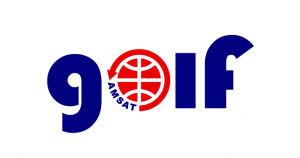 The discussion underlined the importance of maintaining the proven AMCOM infrastructure, proposing to leverage existing telemetry tools like FoxTelem. The proposal includes utilizing five bits of telemetry data to provide feedback on command status, thus ensuring that commands are transmitted successfully and effectively, addressing the limitations of the current system.
The discussion underlined the importance of maintaining the proven AMCOM infrastructure, proposing to leverage existing telemetry tools like FoxTelem. The proposal includes utilizing five bits of telemetry data to provide feedback on command status, thus ensuring that commands are transmitted successfully and effectively, addressing the limitations of the current system.
A pivotal part of the discussion revolved around the concept of “multipart commands.” Heimir illustrated a plan to modify the AMCOM command structure to allow the transmission of multiple segments in a single command, using a sequential numbering system to keep track of these packets. The extension would also involve designating specific bits to indicate whether a command is multipart and which piece of the command is being acknowledged or is missing.
Heimir elaborated on the technical elements of the transmission protocol, detailing how to manage packet loss and potential sequence issues via a robust acknowledgment system. The system would require two threads of execution at the ground station — one for sending commands and another for handling incoming telemetry. This dual threading is crucial as it allows for more efficient communications and processing, maintaining system integrity in the event of packet loss or transmission delays.
A key component of the protocol will be adjusting how command data is structured and transferred, with new formats proposed for command definitions. The transition from a CSV format to a more flexible and human-readable JSON format was suggested to accommodate the new capabilities, making it easier for engineering teams to integrate the changes into their workflows.
The presentation included a demonstration of a simulator designed to visually represent the command transmission process, showcasing how the protocol would function under various conditions, including different rates of packet loss. The simulator was created in Python and is hosted on Heimir’s GitHub repository, making it accessible for further exploration.
During the question and answer section, audience members raised concerns related to the security of satellite communications, particularly regarding potential cyber threats. Heimir reassured participants that encryption and digital signature protocols are already in place for uplink communications, although downlink encryption remains restricted by FCC regulations against obscured transmissions.
The meeting concluded with a reflection on the practicality and challenges of implementing these proposed changes, emphasizing the continuous need for advancements in satellite communication protocols to cater to growing operational complexities and security requirements. Follow-up actions were identified, including finalizing the simulation details and incorporating feedback from the engineering team into the command structure proposal. Thankful remarks were exchanged, acknowledging the collaborative efforts required for successful implementation.
You can read Heimer’s complete paper at https://www.amsat.org/wordpress/wp-content/uploads/2025/11/SS-43_Sverrisson.pdf .
[ANS thanks AMSAT Software Engineer Heimir Thor Sverrisson, W1ANT/TF3ANT, for the above information.]
REALOP CubeSat to Test Hard Drives for ADC SystemThe University of California, Davis will fly its REALOP 2U CubeSat mission with two goals in mind.
The primary goal of the mission will be to provide students with the educational opportunity to design, build, and test a satellite. Students will gain hands-on knowledge of the different subsystems of the satellite and they will learn about the use of amateur radio and how to use RF in order to communicate with spacecraft.
The secondary goal of the mission is to demonstrate the feasibility of using hard disk drives as a low cost alternative to reaction wheels for CubeSat attitude detection and control. This has the potential to reduce the financial barrier of entry into CubeSat development.
A UHF GMSK downlink with a 96 kHz symbol rate on 437.400 is proposed. Telemetry packets will use HDLC framing and a rate 1/2 convolutional forward error correction. Deployment from the ISS is planned for June 2026.
[ANS thanks the IARU for the above information.]
Changes to AMSAT-NA TLE Distribution for November 28, 2025Two Line Elements or TLEs, often referred to as Keplerian elements or keps in the amateur community, are the inputs to the SGP4 standard mathematical model of spacecraft orbits used by most amateur tracking programs. Weekly updates are completely adequate for most amateur satellites. TLE bulletin files are updated daily in the first hour of the UTC day. New bulletin files will be posted immediately after reliable elements become available for new amateur satellites. More information may be found at https://www.amsat.org/keplerian-elements-resources/ .
This week there are no additions or deletions to the AMSAT TLE distribution.
[ANS thanks Joe Fitzgerald, KM1P, AMSAT Orbital Elements Manager for the above information.]
Want to fly the colors on your own grid expedition?
Get your AMSAT car flag and other neat stuff from our Zazzle store!
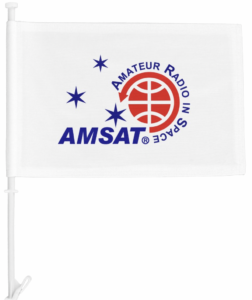 25% of the purchase price of each product goes towards
25% of the purchase price of each product goes towards
Keeping Amateur Radio in Space
https://www.zazzle.com/amsat_gear
Amateurs and others around the world may listen in on contacts between amateurs operating in schools and allowing students to interact with astronauts and cosmonauts aboard the International Space Station. The downlink frequency on which to listen is 145.800 MHz worldwide.
-
Successful Contacts
South-West State University, Kursk, Russia, direct via UB3WCL.
The ISS callsign was RSØISS.
The crewmember was Sergey Ryzhikov.
The ARISS mentor was A.R.C. ENERGIA, RV3DR.
Contact was successful on Saturday, November 22, 2025 at 14:54 UTC.
Moscow Aviation Institute, Moscow, Russia direct via R2AS.
The ISS callsign was RSØISS.
The crewmember was Oleg Platonov
The ARISS mentor was A.R.C. ENERGIA, RV3DR.
Contact was successful on Mon 2025-11-24 14:56 UTC.
- Upcoming Contacts
Lincoln Magnet School, Springfield, Illinois, direct via K9OK.
The ISS callsign is presently scheduled to be NA1SS.
The scheduled crewmember is Jonathan (Jonny) Kim, KJ5HKP.
The ARISS mentor is Charlie Sufana.AJ9N.
Contact is go for Friday, December 5, 2025 at 15:29 UTC.
Russian State Agrarian University – Moscow Agricultural Academy named after K.A. Timiryazev, Moscow, Russia, direct via TBD.
The ISS callsign is presently scheduled to be RSØISS.
The scheduled crewmember is Sergey Kud-Sverchkov.
The ARISS mentor is A.R.C. ENERGIA, RV3DR.
Contact is go for Friday, December 5, 2025 at 11:00 UTC.
- The crossband repeater continues to be active (145.990 MHz up {PL 67} & 437.800 MHz down). If any crewmember is so inclined, all they have to do is pick up the microphone, raise the volume up, and talk on the crossband repeater. So give a listen, you just never know.
- The packet system is also active (145.825 MHz up & down).
- As always, if there is an EVA, a docking, or an undocking; the ARISS radios are turned off as part of the safety protocol.
- Note, all times are approximate. It is recommended that you do your own orbital prediction or start listening about 10 minutes before the listed time.
- The latest information on the operation mode can be found at https://www.ariss.org/current-status-of-iss-stations.html .
- The latest list of frequencies in use can be found at https://www.ariss.org/contact-the-iss.html .
[ANS thanks Charlie Sufana, AJ9N, one of the ARISS operation team mentors for the above information.]
AMSAT Ambassador ActivitiesAMSAT Ambassadors provide presentations, demonstrate communicating through amateur satellites, and host information tables at club meetings, hamfests, conventions, maker faires, and other events.
None currently scheduled.
[ANS thanks Bo Lowrey, W4FCL, Director – AMSAT Ambassador Program, for the above information.]
Satellite Shorts From All Over- ARISS is excited to premier a new video all about Amateur Radio on the International Space Station! Thanks to Nichole Ayers KJ5GWI (@Astro_Ayers on X) who recorded this during her time on the International Space Station. Join them on Tuesday, December 2 at 1800 UTC (1:00 PM EST) for the big reveal! Watch it on https://YouTube.com/ARISSlive . [ANS thanks AMSAT-UK for the above information.]
- Looking to kick back over the holidays and build and fly your own rockets? Well reviewed spaceflight simulators are available for your Android and iOS phones. A free app named Spaceflight Simulator by Team Curiosity can be found at the Google Play and the Apple Apps stores. You can build any rocket you like from available parts and explore the planets in our solar system as you wish.
In addition to regular membership, AMSAT offers membership to:
- Societies (a recognized group, clubs or organization).
- Primary and secondary school students are eligible for membership at no charge.
- Memberships are available for annual and lifetime terms.
Contact info [at] amsat.org for additional membership information.
73 and remember to help Keep Amateur Radio in Space!
This week’s ANS Editor, Frank Karnauskas, N1UW.
f.karnauskas [at] amsat [dot] org
ANS is a service of AMSAT, the Radio Amateur Satellite Corporation, 712 H Street NE, Suite 1653, Washington, DC 20002.
AMSAT is a registered trademark of the Radio Amateur Satellite Corporation.
LIVE YouTube Telethon to Support ARRL Teachers Institute on Wireless Technology
Don’t miss it! The annual YouTube telethon to raise money for the ARRL Teachers Institute on Wireless Technology will be held on Saturday, November 29, 2025, beginning at 3 PM EST / 12 PM PST, on the Ham Radio Crash Course YouTube channel, hosted by Josh Nass, KI6NAZ.
Join Nass and several other amateur radio contributors for a fun and entertaining livestream. They’ll cover a variety of amateur ...
ANS-327 AMSAT News Service Weekly Bulletins

November 23, 2025
In this edition:
- September/October 2025 Edition of The AMSAT Journal Now Available
- New AMSAT CubeSatSim Lite Available on AMSAT Store Sunday
- Happy 12th Birthday to AO-73 (FUNcube-1)
- Successful Reception of CatSat 10 GHz Downlink
- SO-124 Nears End of Orbital Life
- Changes to AMSAT TLE Distribution for October 10, 2025
- ARISS News
- AMSAT Ambassador Activities
- Satellite Shorts From All Over
The AMSAT News Service bulletins are a free, weekly news and information service of AMSAT, The Radio Amateur Satellite Corporation. ANS publishes news related to Amateur Radio in Space including reports on the activities of a worldwide group of Amateur Radio operators who share an active interest in designing, building, launching and communicating through analog and digital Amateur Radio satellites.
The news feed on https://www.amsat.org publishes news of Amateur Radio in Space as soon as our volunteers can post it.
Please send any amateur satellite news or reports to: ans-editor [at] amsat.org
You can sign up for free e-mail delivery of the AMSAT News Service Bulletins via the ANS List; to join this list see: https://mailman.amsat.org/postorius/lists/ans.amsat.org/
September/October 2025 Edition of The AMSAT Journal Now AvailableThe September/October 2025 issue of The AMSAT Journal is now available to members on AMSAT’s Member Portal.
Click here to download your copy now
The AMSAT Journal is a bi-monthly digital magazine for amateur radio in space enthusiasts, published by the Radio Amateur Satellite Corporation (AMSAT). Each issue is your source for hardware and software projects, technical tips, STEM initiatives, operational activities, and news from around the world.
Inside the Current Issue:
- Apogee View – Drew Glasbrenner, KO4MA
- Educational Relations Update – Alan Johnston, KU2Y
- AMSAT Education and CubeSat Simulator Project Update – Alan Johnston, KU2Y
- The STAR Project and the CubeSatSim Lite – Mark Samis, KD2XS
- The Next Time We Might Receive a Message From the Stars – Joe Kornowski, KB6IGK
- Bridging Orbit and Classroom: SatNOGS and CubeSatSim Activities – Frederic Rabb, KK6NOW
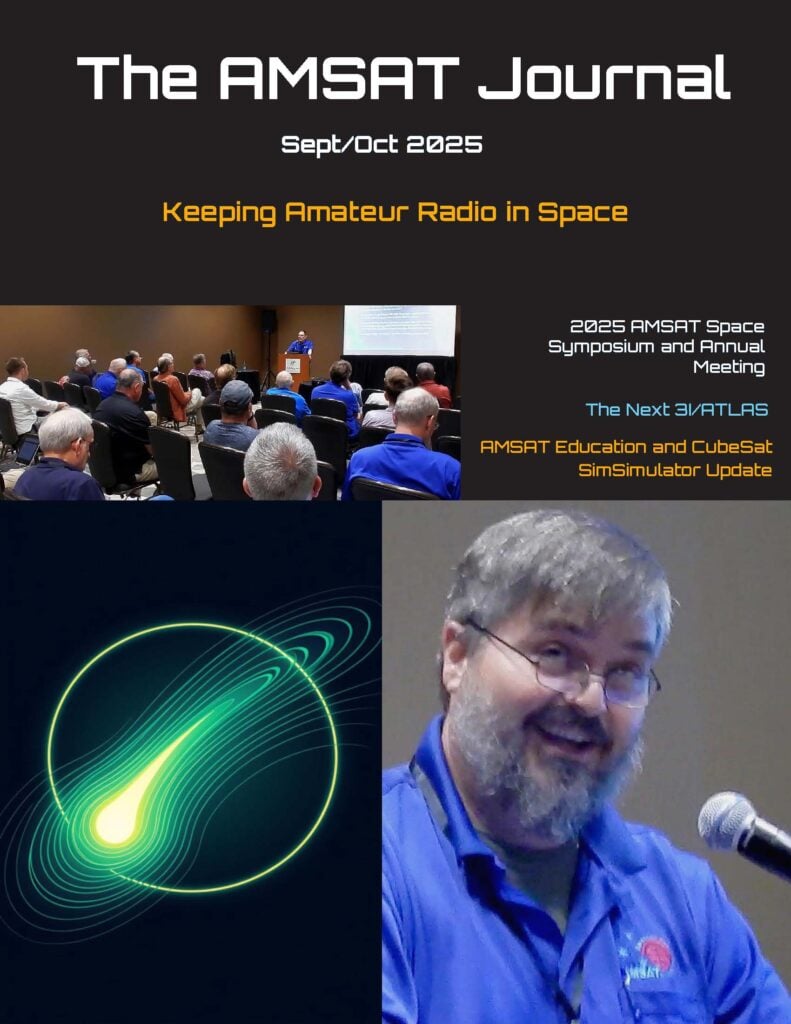
[ANS thanks AMSAT for the above information]
AMSAT Remove Before Flight Key Tags Now AvailableYes, These are the Real Thing!
 Your $20 Donation Goes to Help Fly a Fox-Plus Satellite
Your $20 Donation Goes to Help Fly a Fox-Plus SatelliteIncludes First Class Postage (Sorry – U.S. Addresses Only)
Order Today at https://www.amsat.org/product/amsat-remove-before-flight-keychain New AMSAT CubeSatSim Lite Available on AMSAT Store Sunday
The new AMSAT CubeSatSim Lite will be available on the AMSAT Store starting on Sunday November 23 at 7:00 pm U.S. Eastern Time. The product page can be found at https://www.amsat.org/product/cubesatsim-lite–complete/
The CubeSatSim Lite comes fully assembled and includes a Pi Zero 2W with CubeSatSim micro SD card installed, SMA antennas, USB sound card, Pi Camera, and USB power cord and plug. Just plug it into a power outlet and you will receive simulated telemetry in seven modes including the new FUNcube mode and Cross Band Repeater Mode. For full information see this Wiki page: https://github.com/alanbjohnston/CubeSatSim/wiki/CubeSatSim-Lite or the CubeSatSim ReadMe file: https://cubesatsim.org/download/cubesatsim-lite–readme.pdf This is a small initial batch – the next batch should be available early in the new year.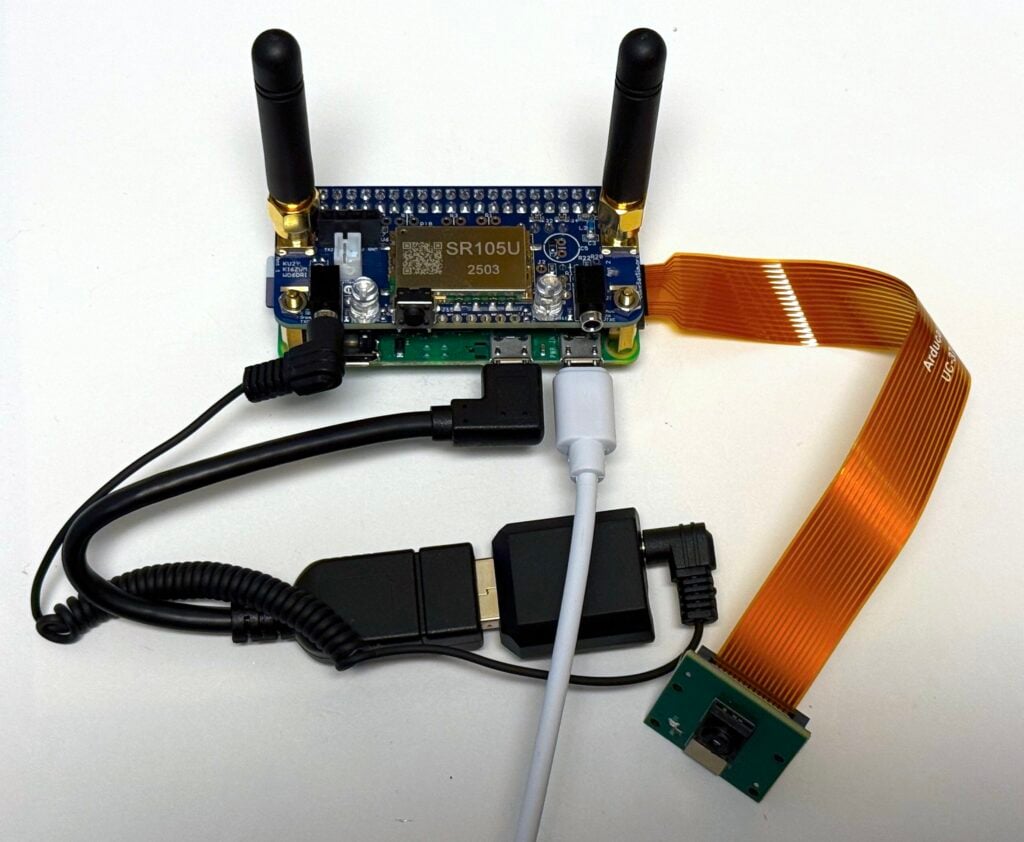 CubeSatSim Lite Complete
CubeSatSim Lite Complete
[ANS thanks Alan Johnston, KU2Y, AMSAT Vice President – Educational Relations, for the above information]
The 2025 AMSAT President’s Club Coins Are Here!
Celebrating the 40th Anniversary of Amateur Radio on Human Spaceflight
Help Support GOLF and Fox Plus.
Join the AMSAT President’s Club today!

AO-73 celebrated its 12th birthday on November 21, 2025. The satellite is still operating well in full-time transponder mode.
On November 21, 2013 FUNcube-1 (AO-73) was launched from the Yasny launch base located in the Orenburg Region, Russia on a Dnepr Launch Vehicle into a 600 km, 97.8º inclination sun-synchronous orbit. In this orbit the satellite passes over the British Isles and Europe approximately 3 times in the morning, and 3 in the evening, every day, perhaps allowing the morning passes to be used for educational purposes and the evening passes for Amateur Radio communications.
FUNcube carries a UHF to VHF linear transponder that has 300 mW PEP output and which can be used by Radio Amateurs worldwide for SSB and CW communications.
Communication subsystem:
• 145.935 MHz BPSK Telemetry 30/300 mW
• Inverting SSB/CW transponder 300 mW
– 435.150 – 435.130 MHz Uplink
– 145.950 – 145.970 MHz Downlink
The passband may be up to 15 kHz higher depending on on-board temperatures. Low temperatures give higher frequencies
As of writing, ground stations from around the world have collected 11,631,536 frames of telemetry throughout the satellite’s life. The satellite’s recently received telemetry values can be found on AMSAT-UK’s Data Warehouse at http://data.amsat-uk.org/ui/fc1-fm.
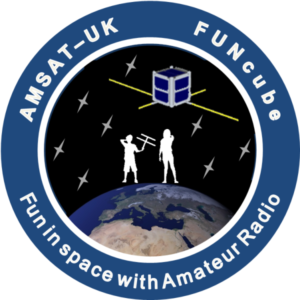
[ANS thanks AMSAT-UK for the above information]
 Successful Reception of CatSat 10 GHz Downlink
Successful Reception of CatSat 10 GHz Downlink
Mike Seguin, N1JEz, reports the successful reception of the University of Arizona’s CatSat’s 10 GHz downlink on 10.47 GHz on the morning of November 21, 2025. The satellite’s linear transponder uses 10 GHz down and 5 GHz up. More information is available at https://catsat.arizona.edu/
Mike reports that signals were quite good in FN34xn in Vermont! His next step is to try the uplink on 5 GHz on 5.663 GHz.
Below is a link to a portion of the pass. It is an I&Q file recorded with HDSDR using the Winrad format.
https://drive.google.com/file/d/15cuuhi-U5WDkVjiKHJeuP_argBhH0Cpz/view?usp=drive_link
Congrats to the CatSat team!!
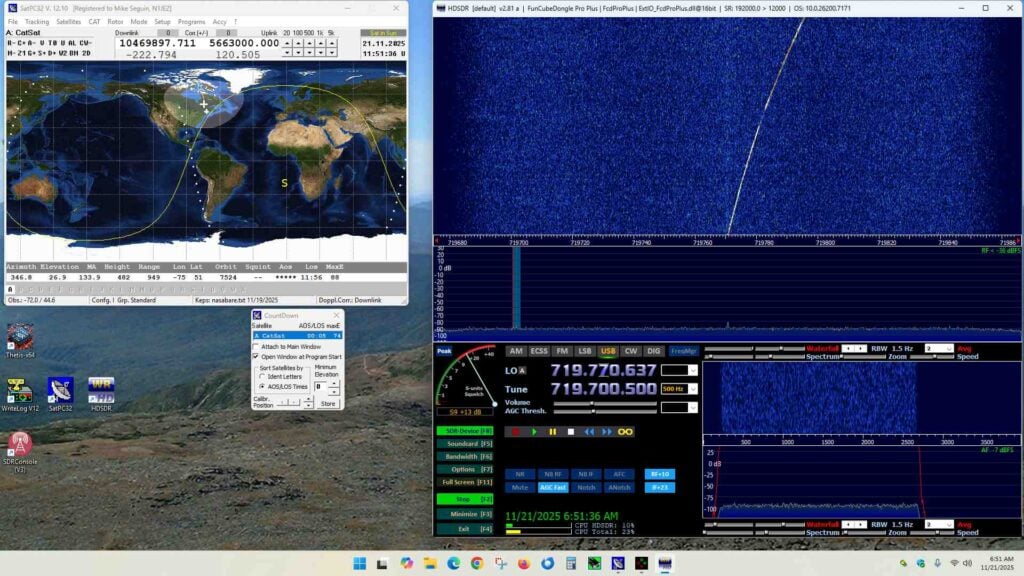
[ANS thanks Mike Seguin, N1JEZ, and the University of Arizona’s CatSat Team for the above information]
SO-124 Nears End of Orbital LifeSimulations indicate that the decay of our satellite HADES-R (SO–124) is approaching and will likely occur during the first two weeks of January 2026. If you can, take the opportunity to make use of this satellite, which has been working very well and has brought much joy to radio amateurs around the world. Any old FM equipment will work, since the repeater is level-activated and does not require a sub-tone.
The frequencies and operating modes are as follows:
SO-124
145.925 MHz uplink, Modes: FM voice (no sub-tone) and FSK 200 bps, AFSK, AX.25, APRS 1200 / 2400 bps
436.888 MHz downlink, Modes: FM voice, CW, FSK 200–2400 bps
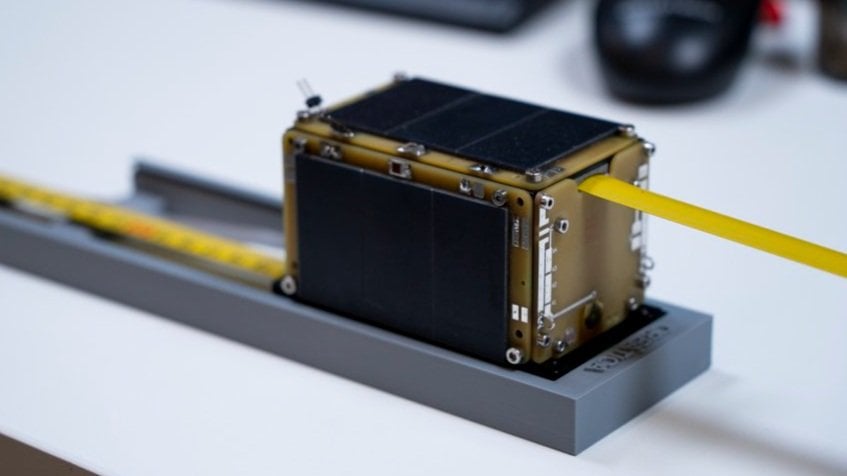
[ANS thanks Félix Páez, EA4GQS, AMSAT-EA for the above information]
Changes to AMSAT TLE Distribution for November 21, 2025Two Line Elements or TLEs, often referred to as Keplerian elements or keps in the amateur community, are the inputs to the SGP4 standard mathematical model of spacecraft orbits used by most amateur tracking programs. Weekly updates are completely adequate for most amateur satellites. TLE bulletin files are updated daily in the first hour of the UTC day. New bulletin files will be posted immediately after reliable elements become available for new amateur satellites. More information may be found at https://www.amsat.org/keplerian-elements-resources/.
This week there are no changes to the AMSAT TLE Distributions.
[ANS thanks Joe Fitzgerald, KM1P, AMSAT Orbital Elements Manager, for the above information]
Need new satellite antennas?Purchase an M2 LEO-Pack from the AMSAT Store! When you purchase through AMSAT, a portion of the proceeds goes towards Keeping Amateur Radio in Space.
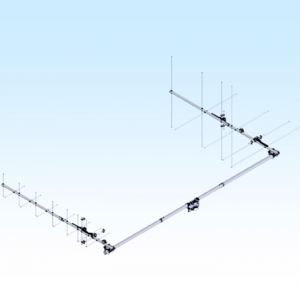
Amateurs and others around the world may listen in on contacts between amateurs operating in schools and allowing students to interact with astronauts and cosmonauts aboard the International Space Station. The downlink frequency on which to listen is 145.800 MHz worldwide.
Scheduled ContactsIstituto Di Istruzione Superiore “Il Tagliamento” Di Spilimbergo (Pn), Spilimbergo, Italy, telebridge via IK1SLD
AND
Istituto Comprensivo “G. Mazzini”, Livorno, Italy, telebridge via TBD
The ISS callsign is presently scheduled to be OR4ISS
The scheduled crewmember is Zena Cardman KJ5CMN
The ARISS mentor is IZ2GOJ
Contact is go for: Fri 2025-11-28 11:40:17 UTC 34 deg
Due to the scheduled docking of the Soyuz scheduled for Thu 2025-11-27 12:38 UTC, the radios will be powered down. Here is the schedule for power down and power up:
Service module radio power down Thu 2025-11-27 10:35 to 10:40 UTC
Columbus module radio power down Thu 2025-11-27 10:40 to 10:45 UTC
Service module radio power up Fri 2025-11-28 10:15 to 10:20 UTC
Columbus module radio power up Fri 2025-11-28 10:20 to 10:25 UTC
Many times a school may make a last minute decision to do a Livestream or run into a last minute glitch requiring a change of the URL but we at ARISS may not get the URL in time for publication. You can always check https://live.ariss.org/ to see if a school is Livestreaming.
As always, if there is an EVA, a docking, or an undocking; the ARISS radios are turned off as part of the safety protocol.
The crossband repeater continues to be active (145.990 MHz up {PL 67} & 437.800 MHz down), If any crewmember is so inclined, all they have to do is pick up the microphone, raise the volume up, and talk on the crossband repeater. So give a listen, you just never know.
Note, all times are approximate. It is recommended that you do your own orbital prediction or start listening about 10 minutes before the listed time.
The latest information on the operation mode can be found at https://www.ariss.org/current-status-of-iss-stations.html
The latest list of frequencies in use can be found at https://www.ariss.org/contact-the-iss.html
[ANS thanks Charlie Sufana, AJ9N, one of the ARISS operation team mentors for the above information]
Want to fly the colors on your own grid expedition?Get an AMSAT car flag and other neat stuff from our Zazzle store!
25% of the purchase price of each product goes towards Keeping Amateur Radio in Space

AMSAT Ambassadors provide presentations, demonstrate communicating through amateur satellites, and host information tables at club meetings, hamfests, conventions, maker faires, and other events.
AMSAT Ambassador Clint Bradford, K6LCS, says,
“Think a 75-minute presentation on “working the easy satellites” would be appropriate for your club or event? Let me know by emailing me at k6lcsclint (at) gmail (dot) com or calling me at 909-999-SATS (7287)!”
Clint has NEVER given the exact same show twice: EACH of the 150+ presentations so far has been customized/tailored to their audiences.
Scheduled EventsNo events currently scheduled
Interested in becoming an AMSAT Ambassador? AMSAT Ambassadors provide presentations, demonstrate communicating through amateur satellites, and host information tables at club meetings, hamfests, conventions, maker faires, and other events.
For more information go to: https://www.amsat.org/ambassador/
[ANS thanks Bo Lowrey, W4FCL, Director – AMSAT Ambassador Program, for the above information]
Satellite Shorts from All Over+ China is set to launch an uncrewed Shenzhou spacecraft to the Tiangong space station to provide the Shenzhou-21 astronauts with a means of returning home. An airspace closure notice issued Nov. 17 indicates that China is preparing the Shenzhou-22 spacecraft and a Long March 2F rocket for launch at around 04:10z. on Nov. 25. (ANS thanks SpaceNews Weekly for the above information)
+ Reports indicate the Lobachevsky (RS83S) will be launched in late December. Although the IARU coordination request indicated that it would carry a digital repeater, the satellite’s website indicates that it carries an FM transponder with a 70cm uplink and a 2m downlink. (ANS thanks SpacePi and PV8DX for the information)
Join AMSAT today at https://launch.amsat.org/
In addition to regular membership, AMSAT offers membership to:
- Societies (a recognized group, clubs or organization).
- Primary and secondary school students are eligible for membership at one-half the standard yearly rate.
- Post-secondary school students enrolled in at least half time status shall be eligible for the student rate for a maximum of 6 post-secondary years in this status.
- Memberships are available for annual and lifetime terms.
Contact info [at] amsat.org for additional membership information.
73 and remember to help Keep Amateur Radio in Space!
This week’s ANS Editor,
Paul Stoetzer, N8HM
n8hm [at] arrl.net
ANS is a service of AMSAT, the Radio Amateur Satellite Corporation, 712 H Street NE, Suite 1653, Washington, DC 20002
2025 ARRL Board of Directors Election Results
ARRL The National Association for Amateur Radio® announces the results of the 2025 ARRL Division elections.
In the ARRL Pacific Division, current Director John Litz, NZ6Q (1,270 votes), of Stockton, California, was declared the winner, defeating Bob Vallio, W6RGG (960 votes).
In the Southeastern Division, current Director Mickey Baker, N4MB (1,596 votes), of West Palm Beach, Florida, was declared...
The ARRL Solar Update
Solar activity has remained low this past week. The largest flare
was a C9.9 on November 19 from a region just beyond the NE limb near
N17. Region 4284 grew slightly in the early part of the period but
was in decay after November 19.
New Region 4287 was numbered. A Type II radio sweep (estimated at
695 km/s) was observed on November 19 at 2215 UTC, likely associated
with a B9.0 flare from just beyond...
SKYWARN Recognition Day 2025 Cancelled
NOAA’s National Weather Service (NWS) has announced the cancellation of SKYWARN™ Recognition Day (SRD) 2025.
The necessary time and resources required to plan a comprehensive national event for SKYWARN™ Recognition Day 2025 are not available this year. Thus, the difficult decision was made to cancel this year's event by the NWS.
The NWS will work with ARRL and SKYWARN™ spotters to brainstorm i...
ARRL VEC Ready to File 2,500+ Ham Radio License Applications; FCC Extends Renewal Filing Deadline
ARRL The National Association of Amateur Radio® reports that the FCC has extended the filing deadline to March 5, 2026, for amateur radio licenses that otherwise were due to expire from October 1, 2025, to March 5, 2026. The announcement is included in an FCC Public Notice (DA-25-943) released on Monday, November 17, 2025.
The news follows the recent reopening of the federal government on Novem...
